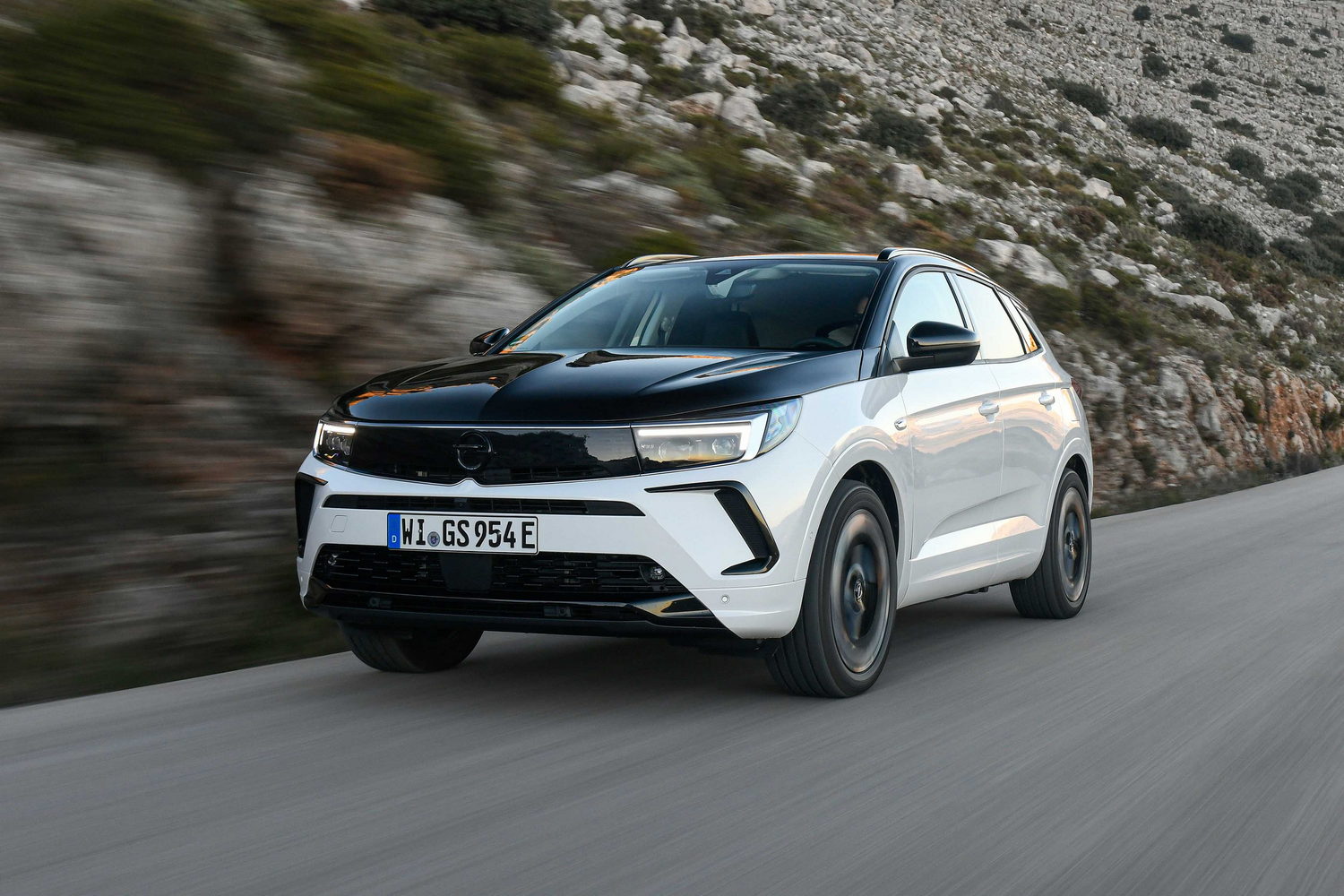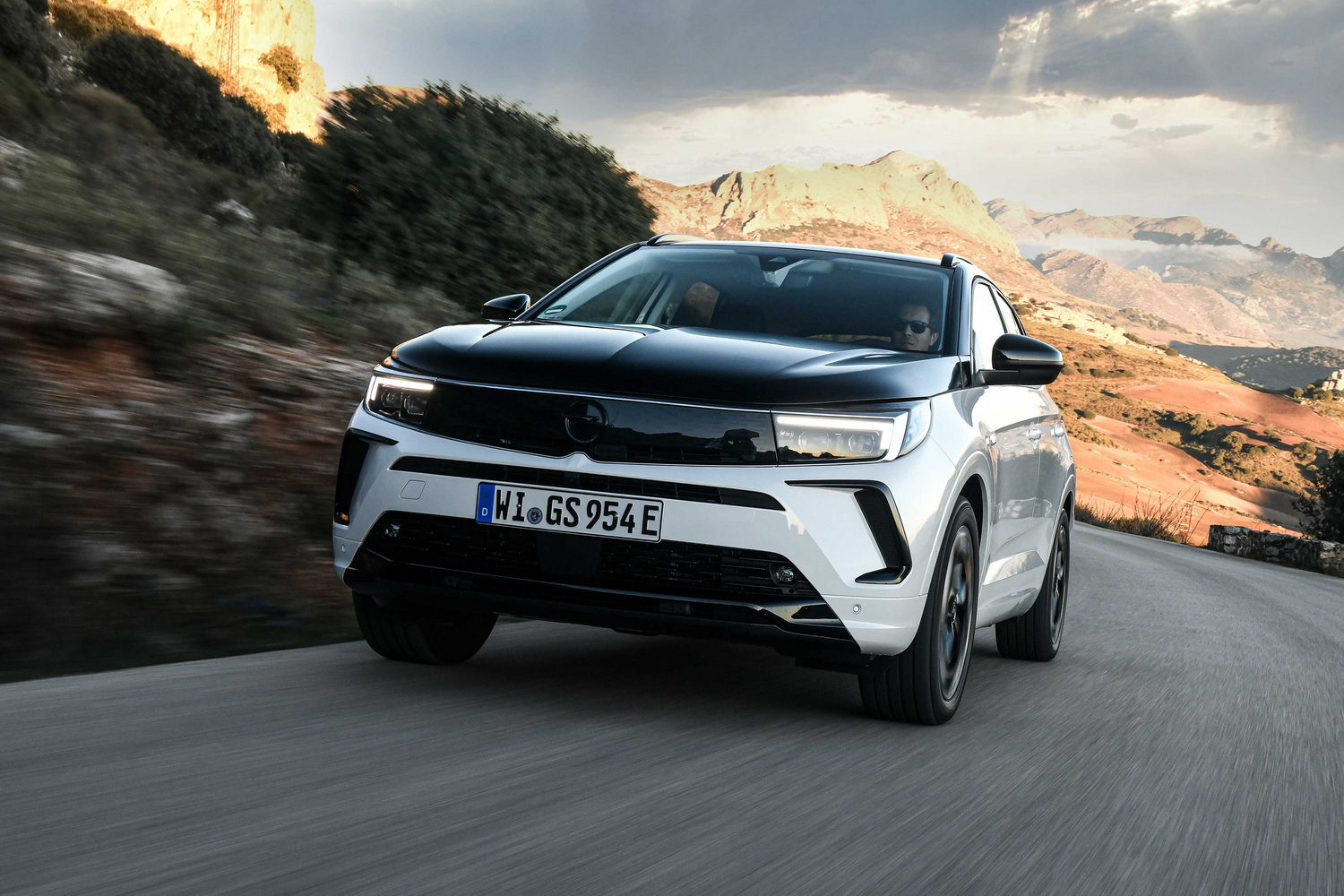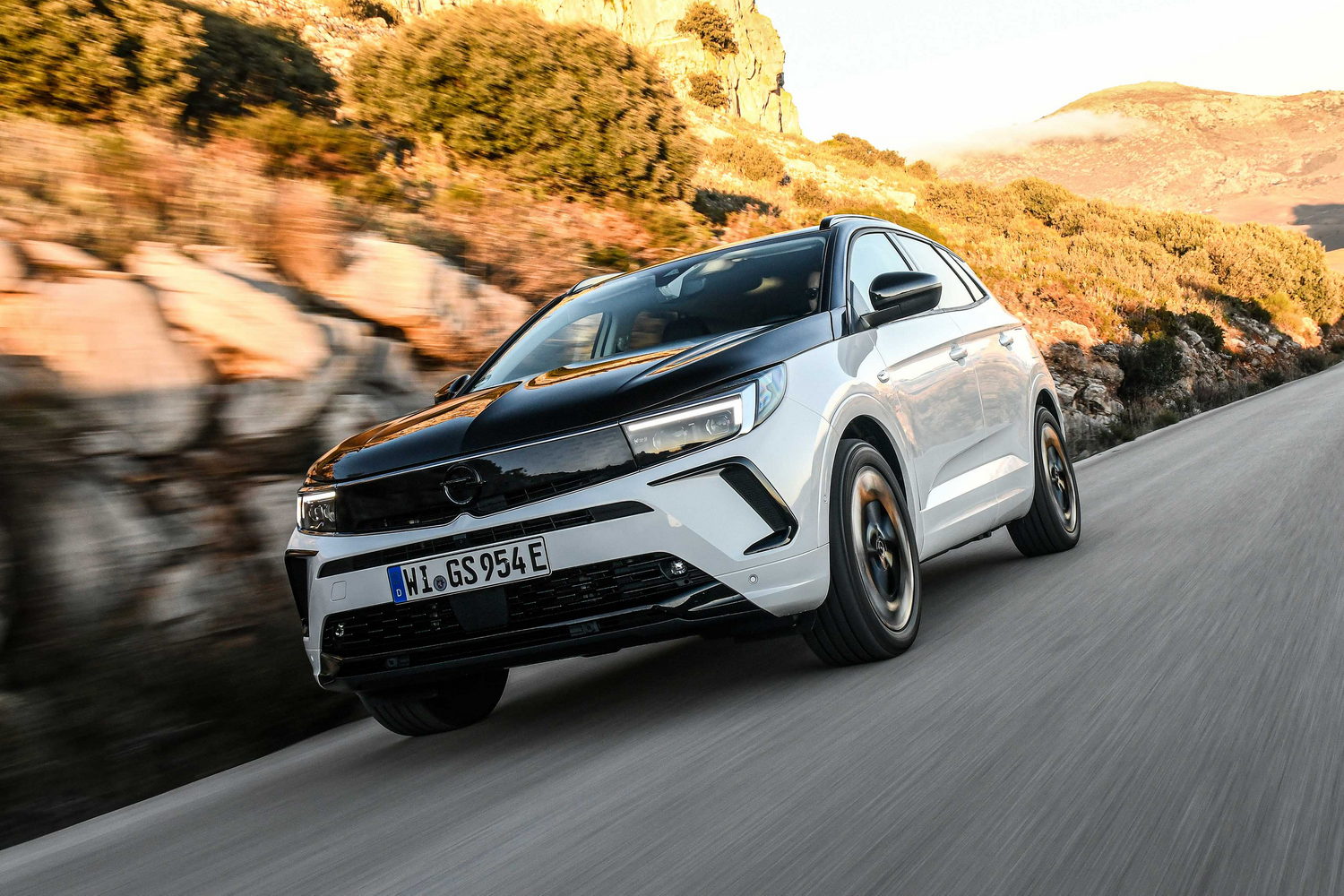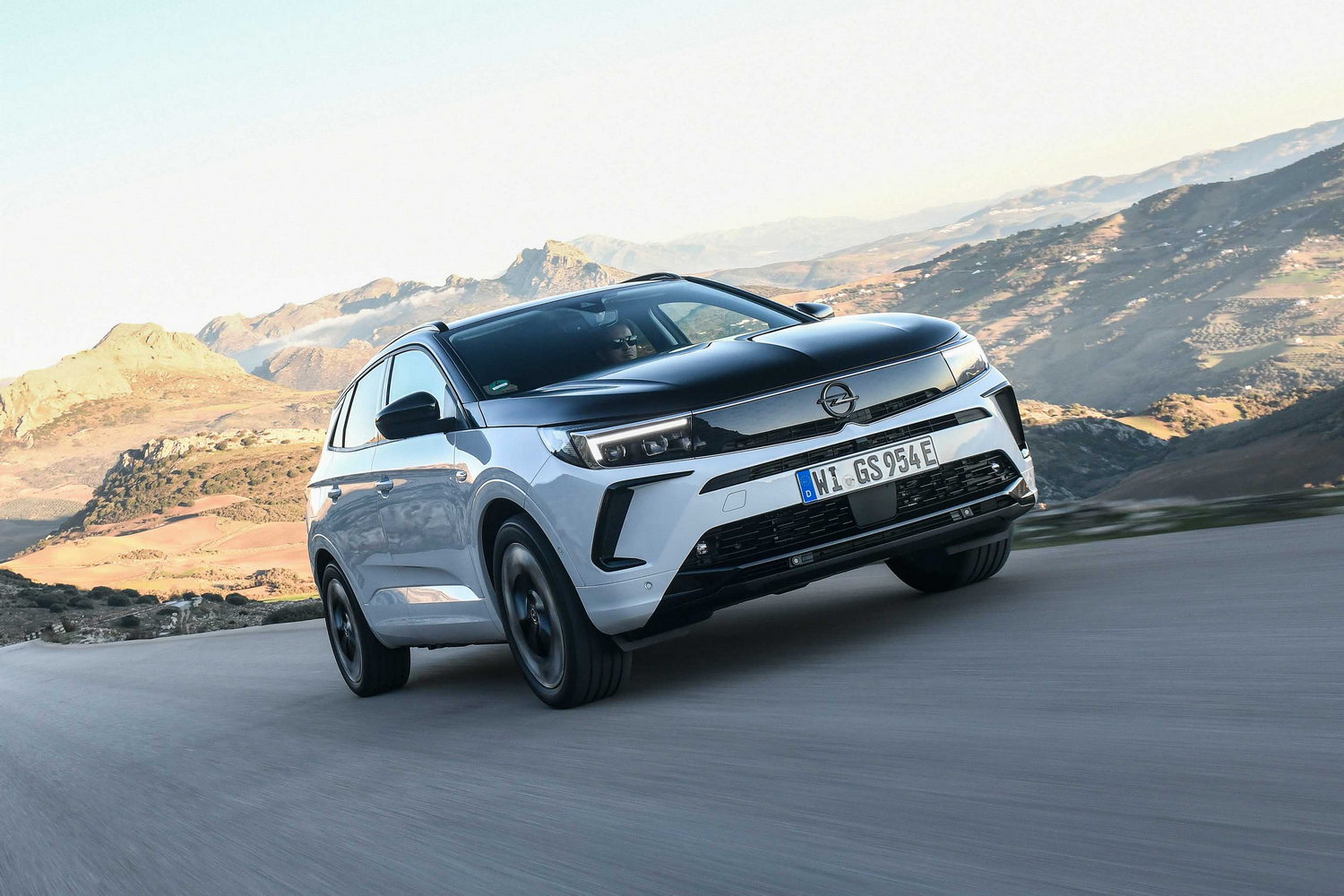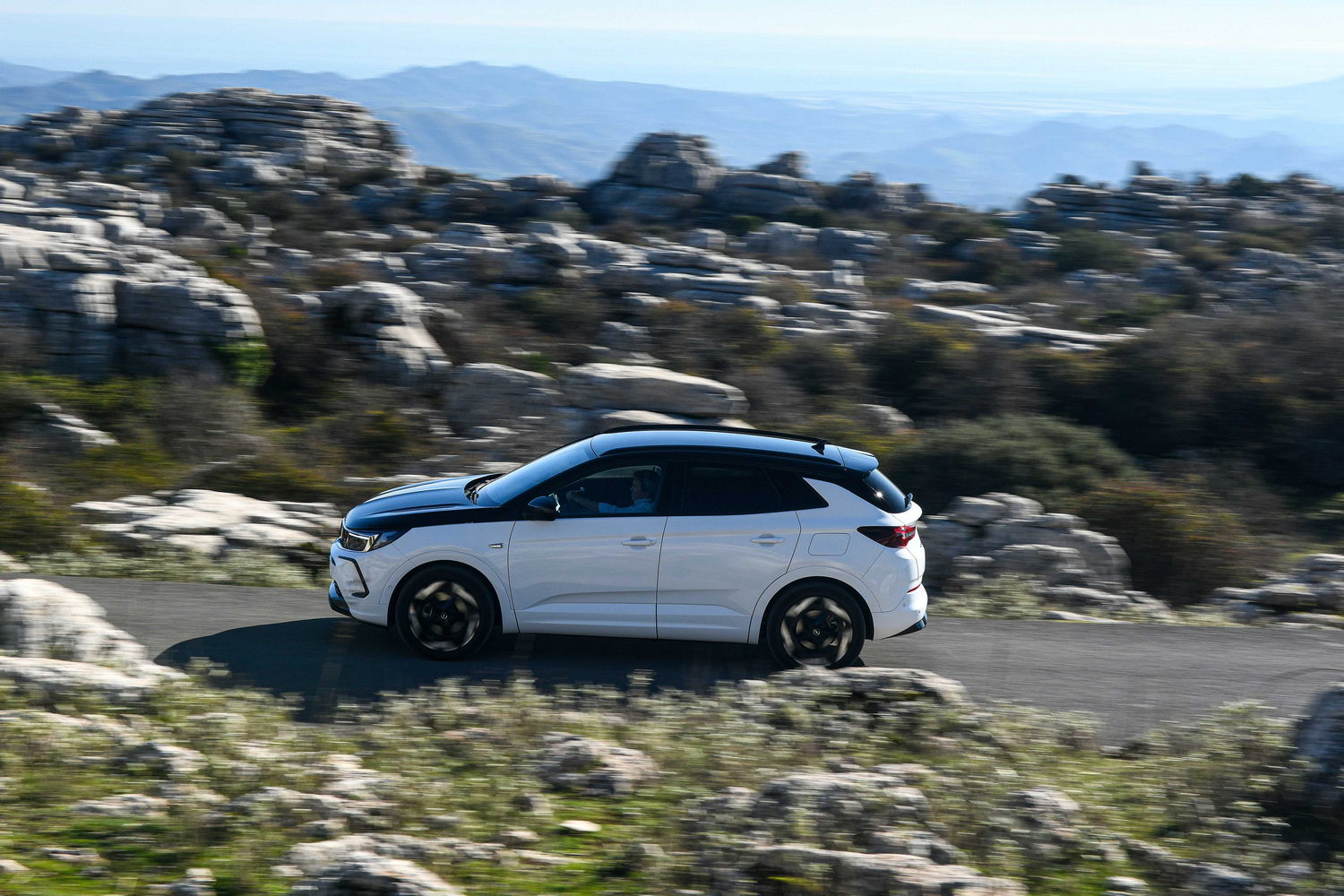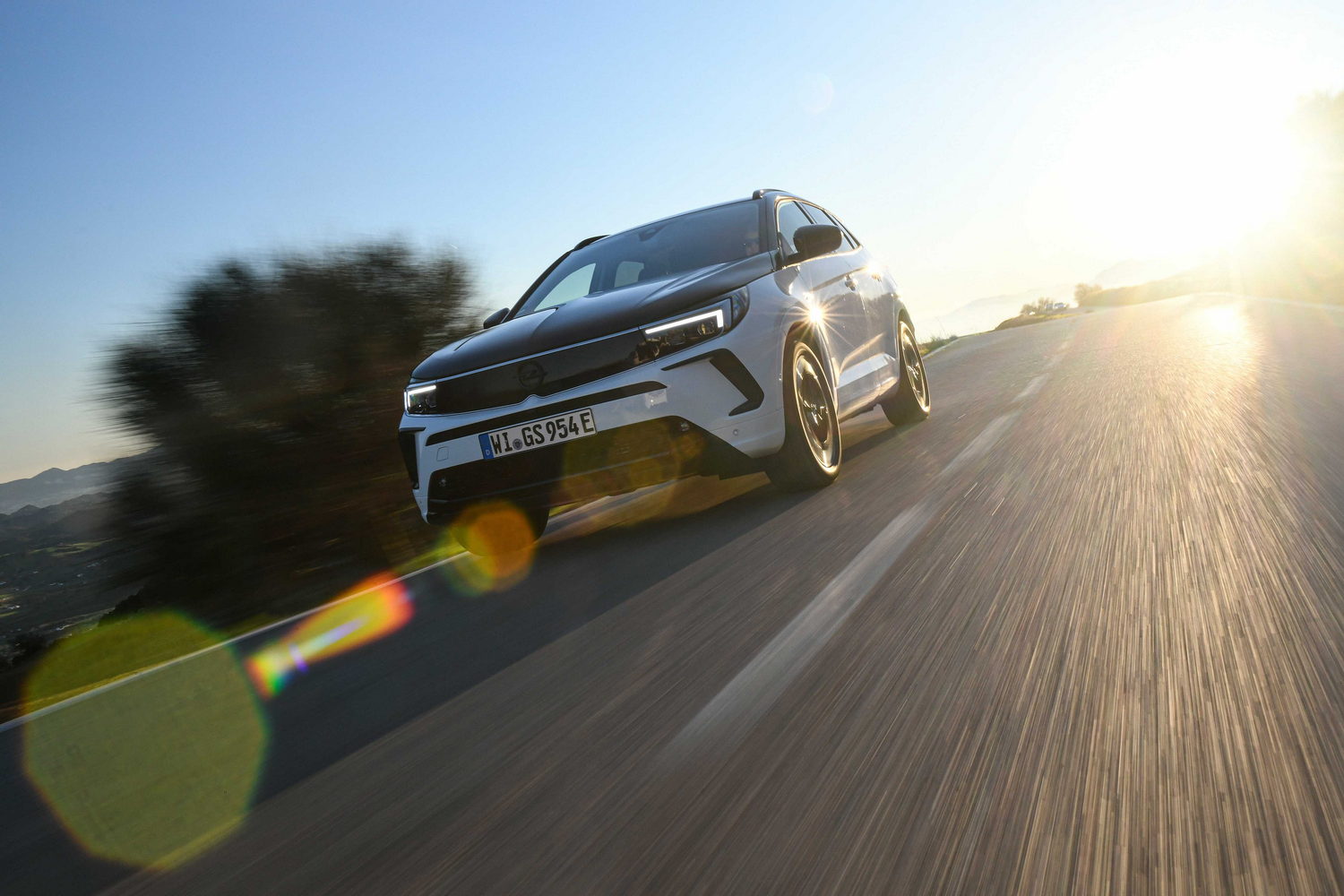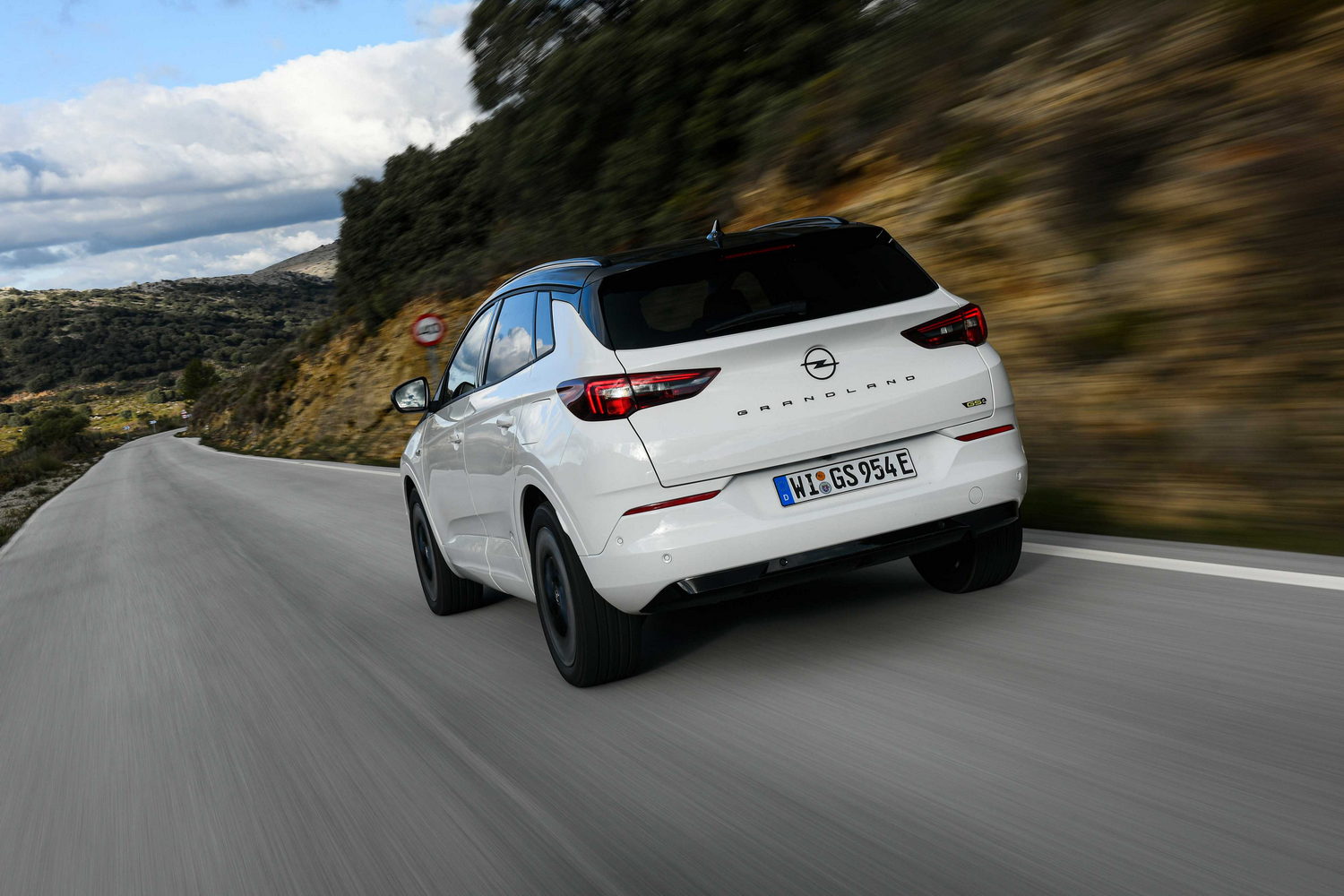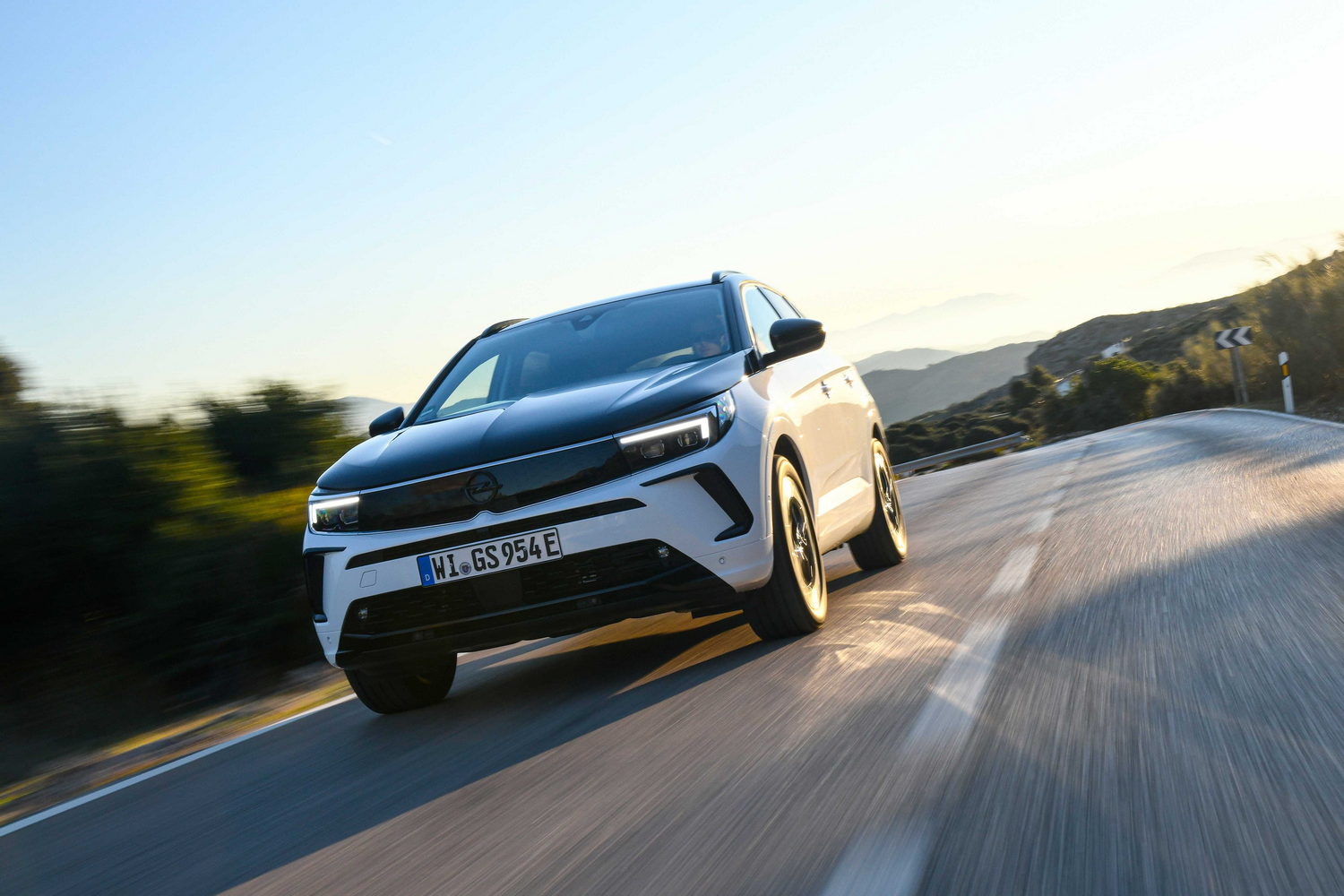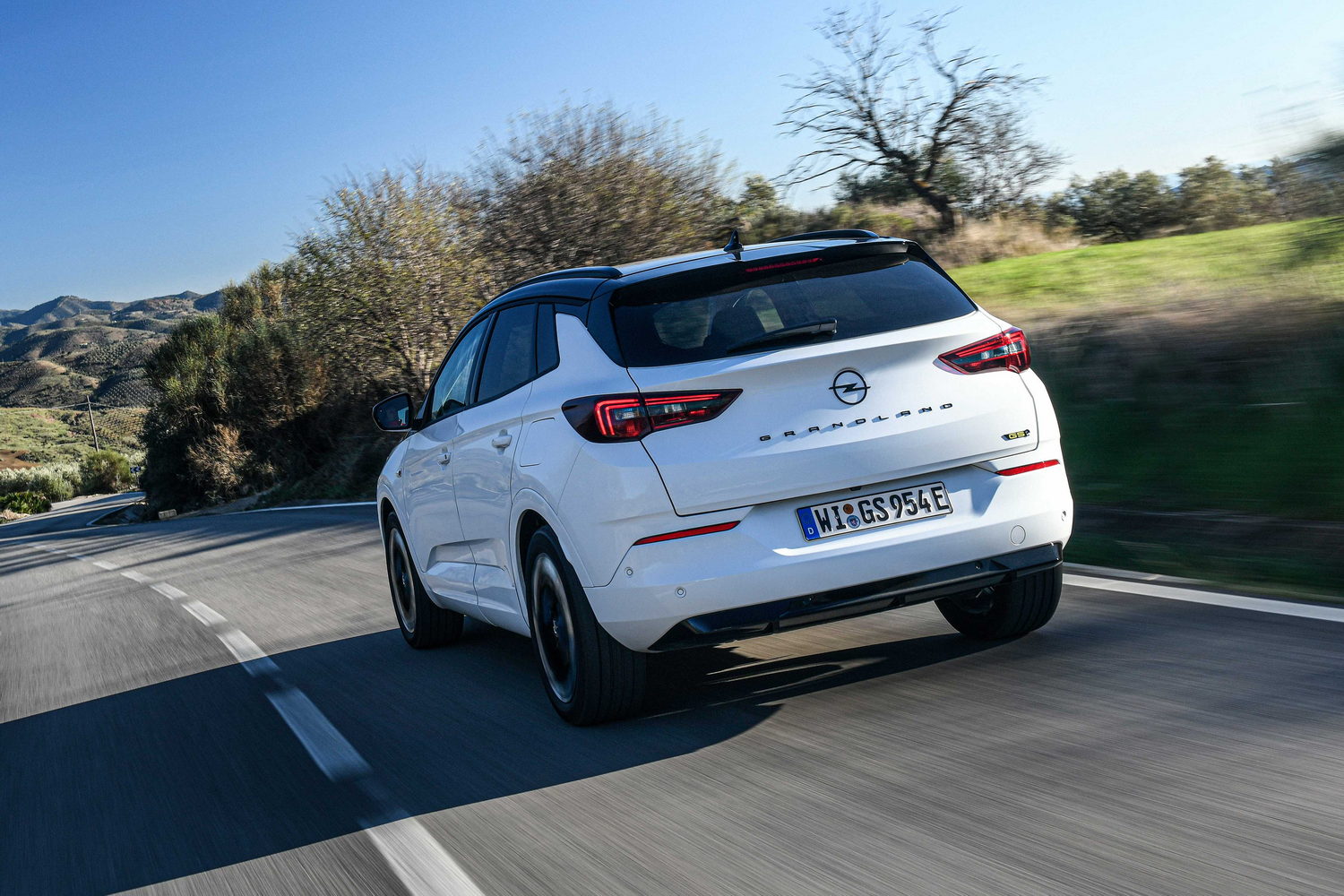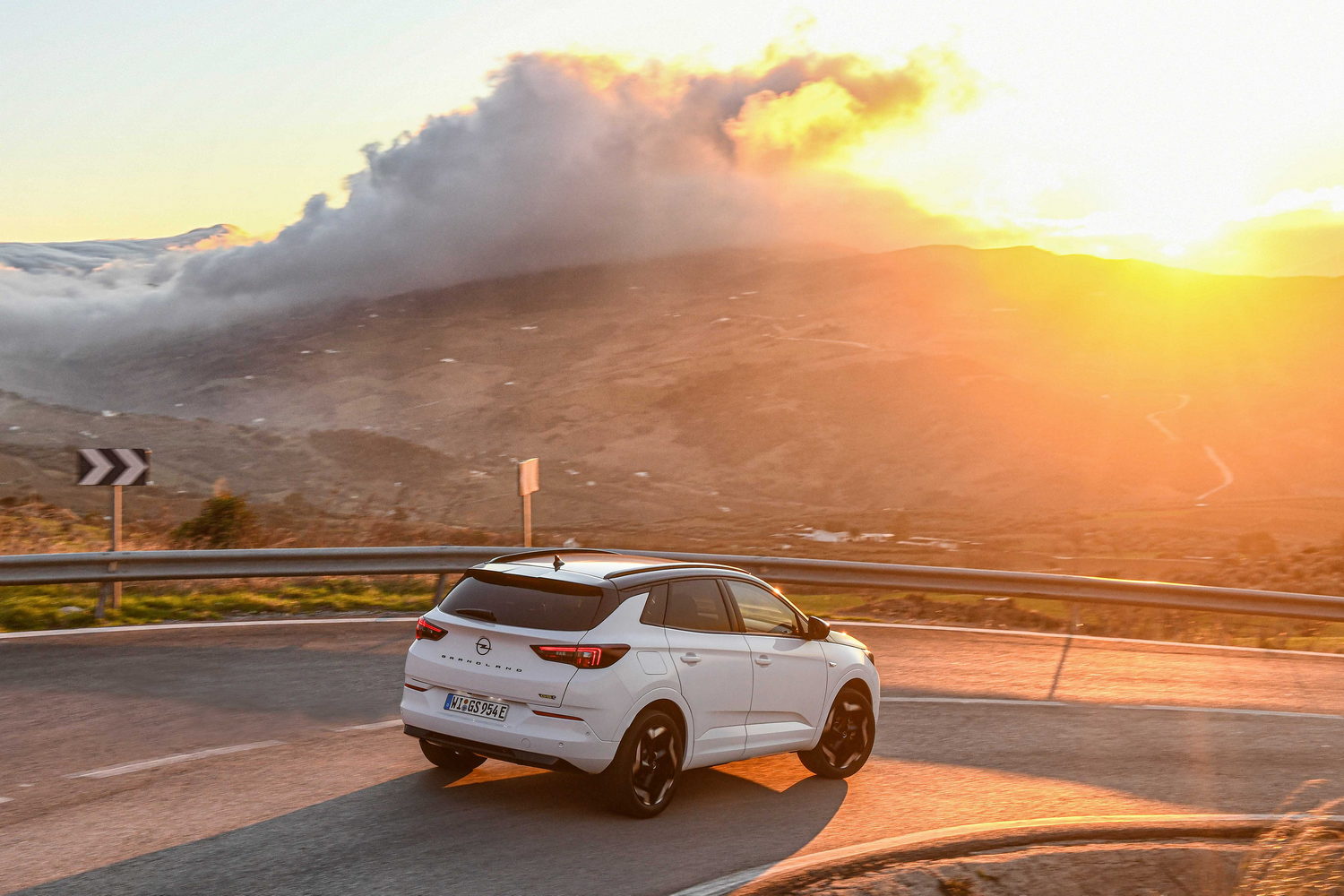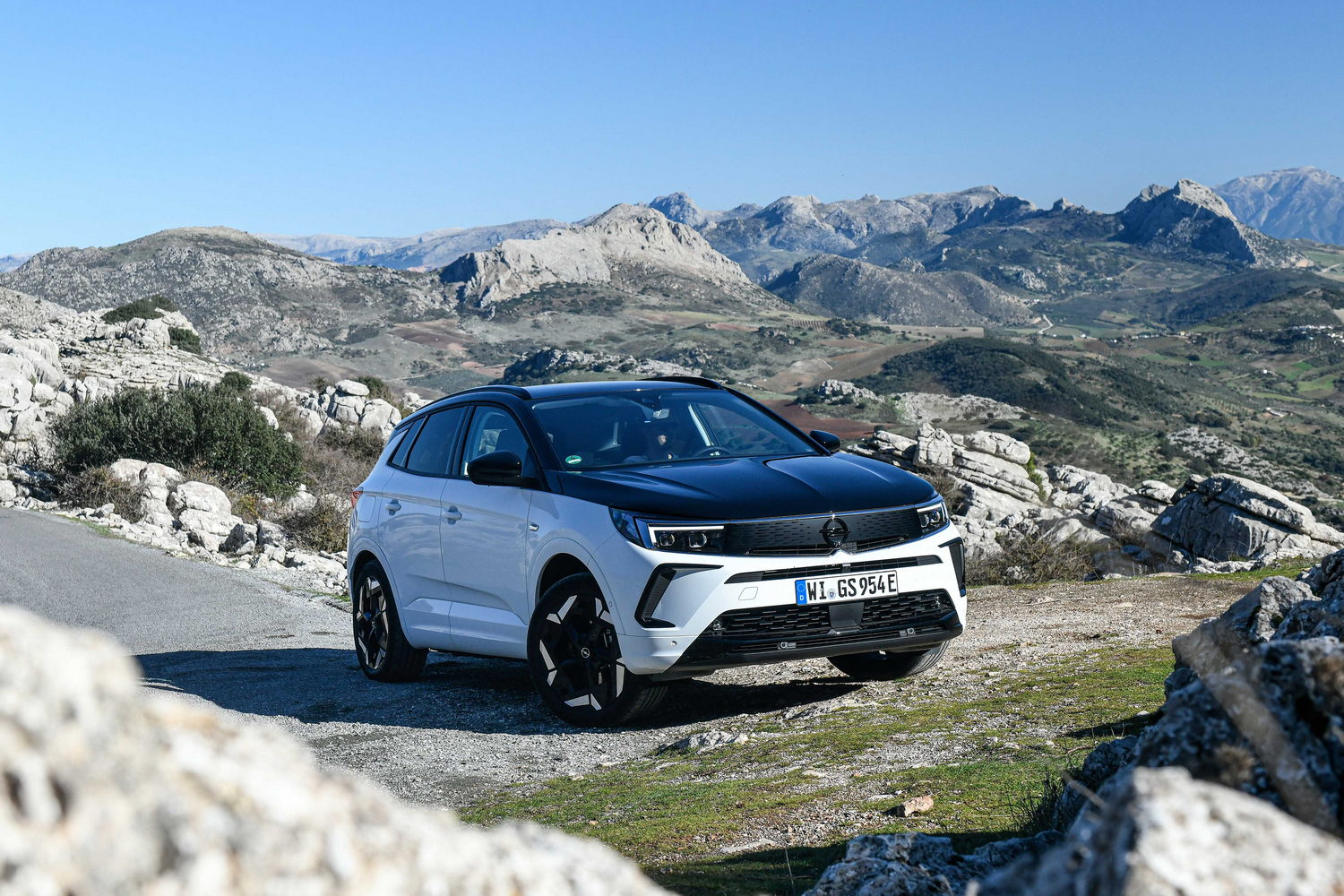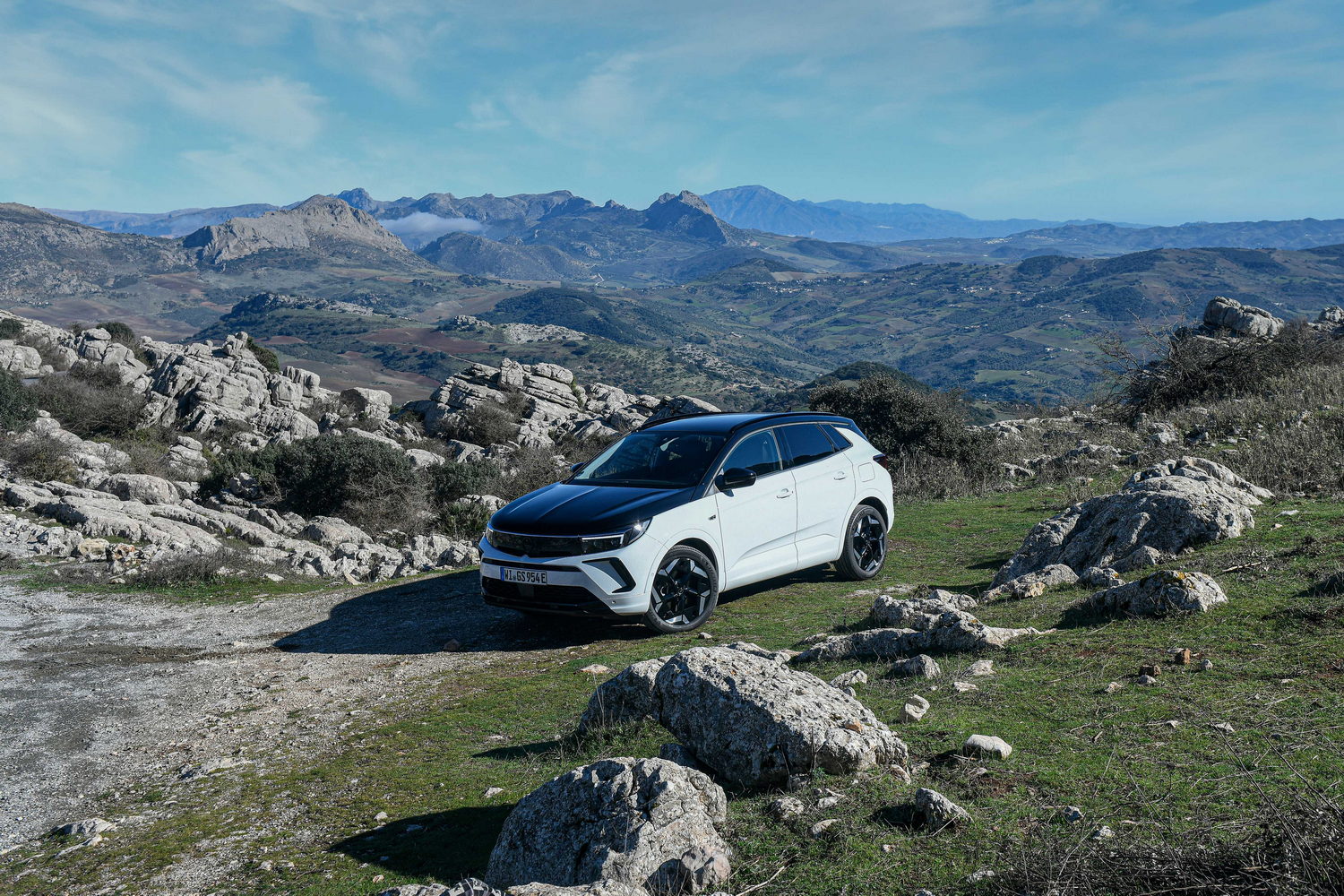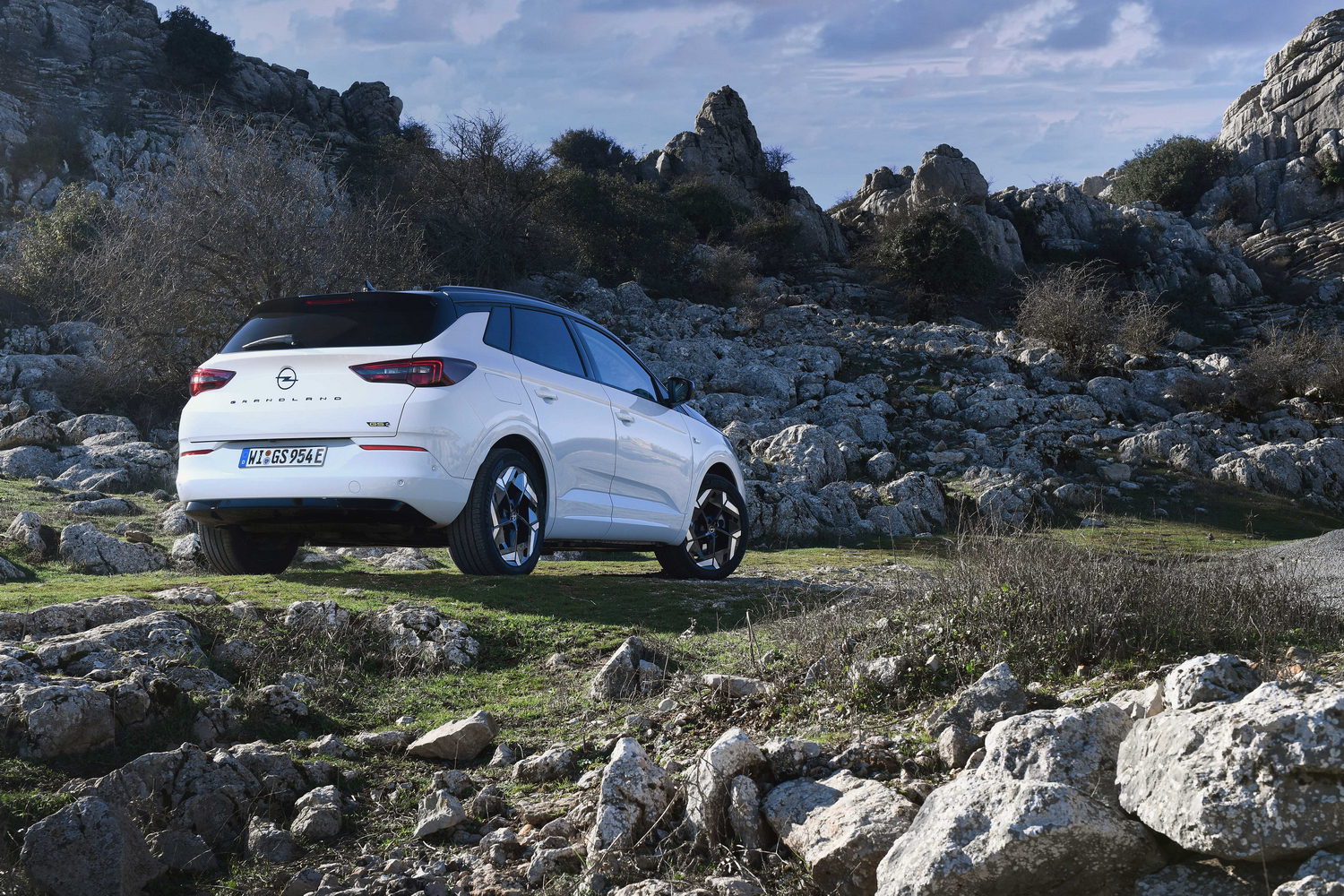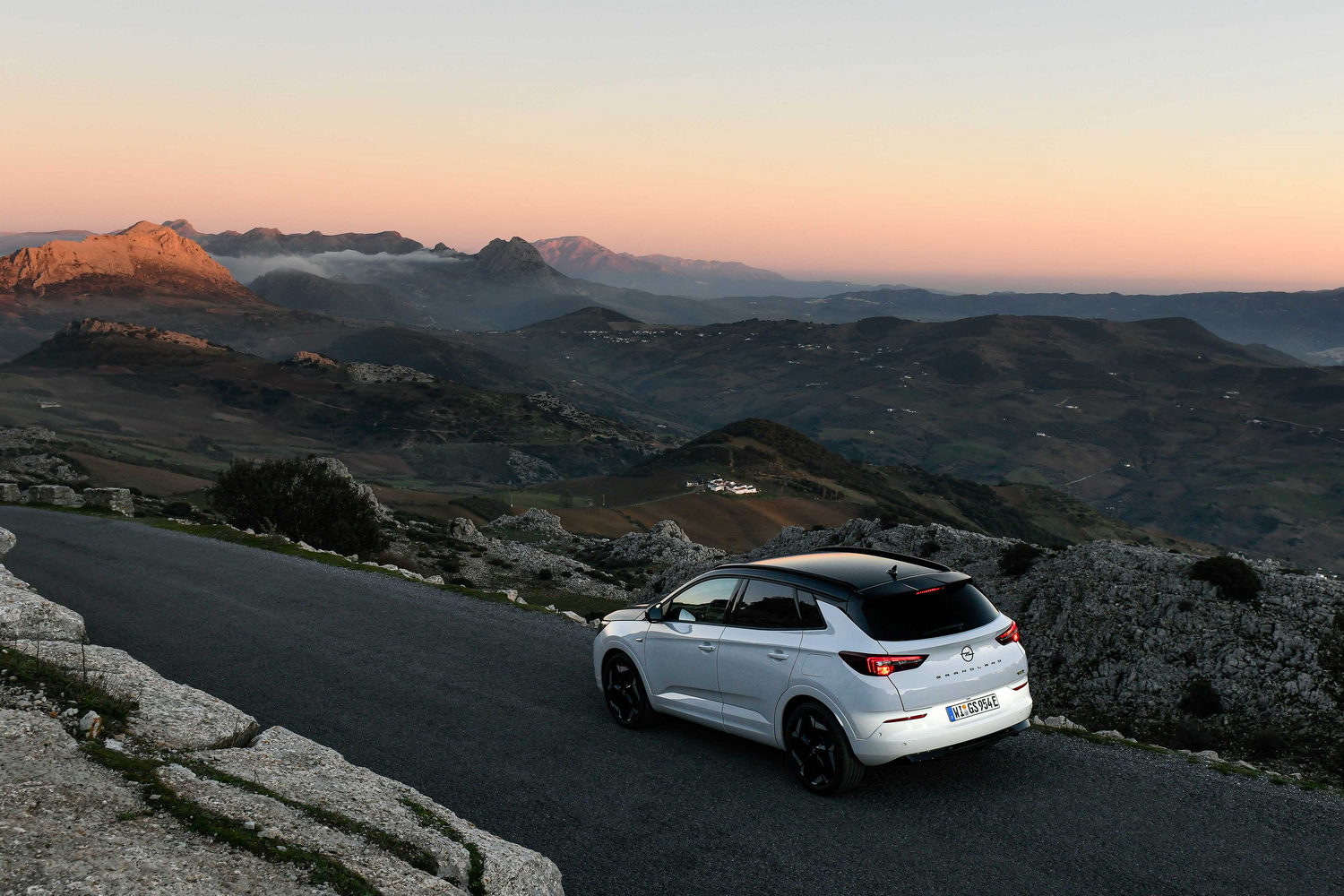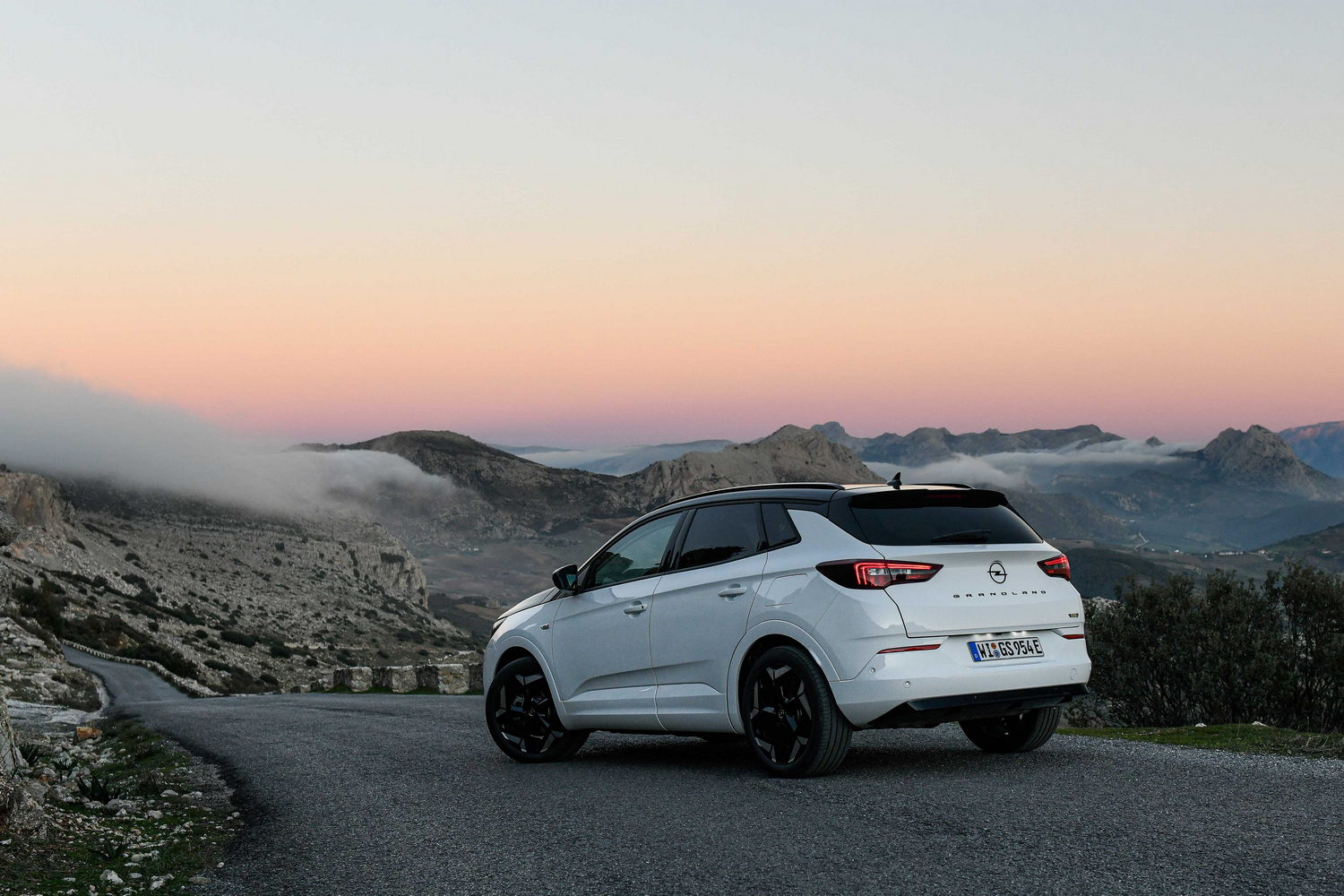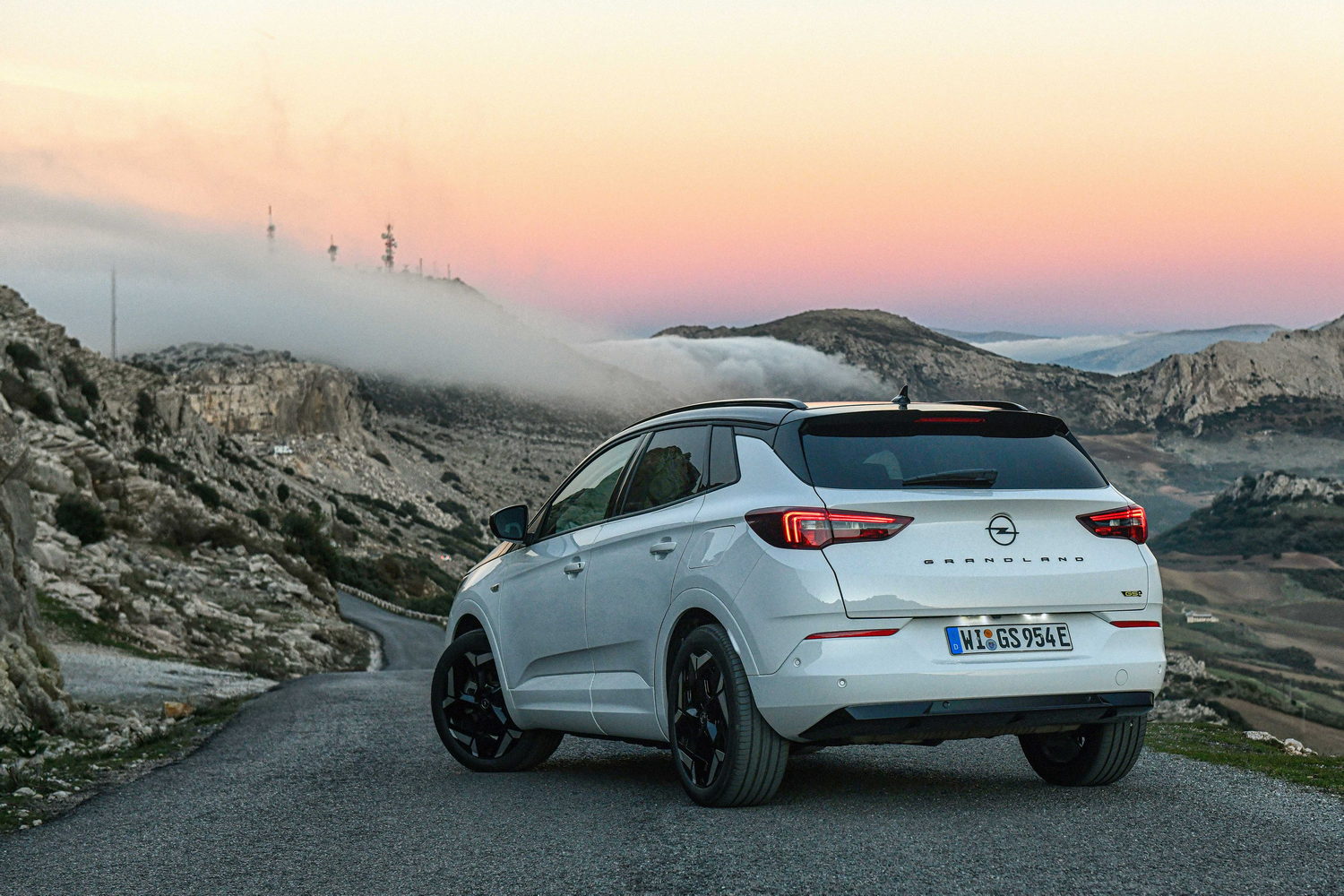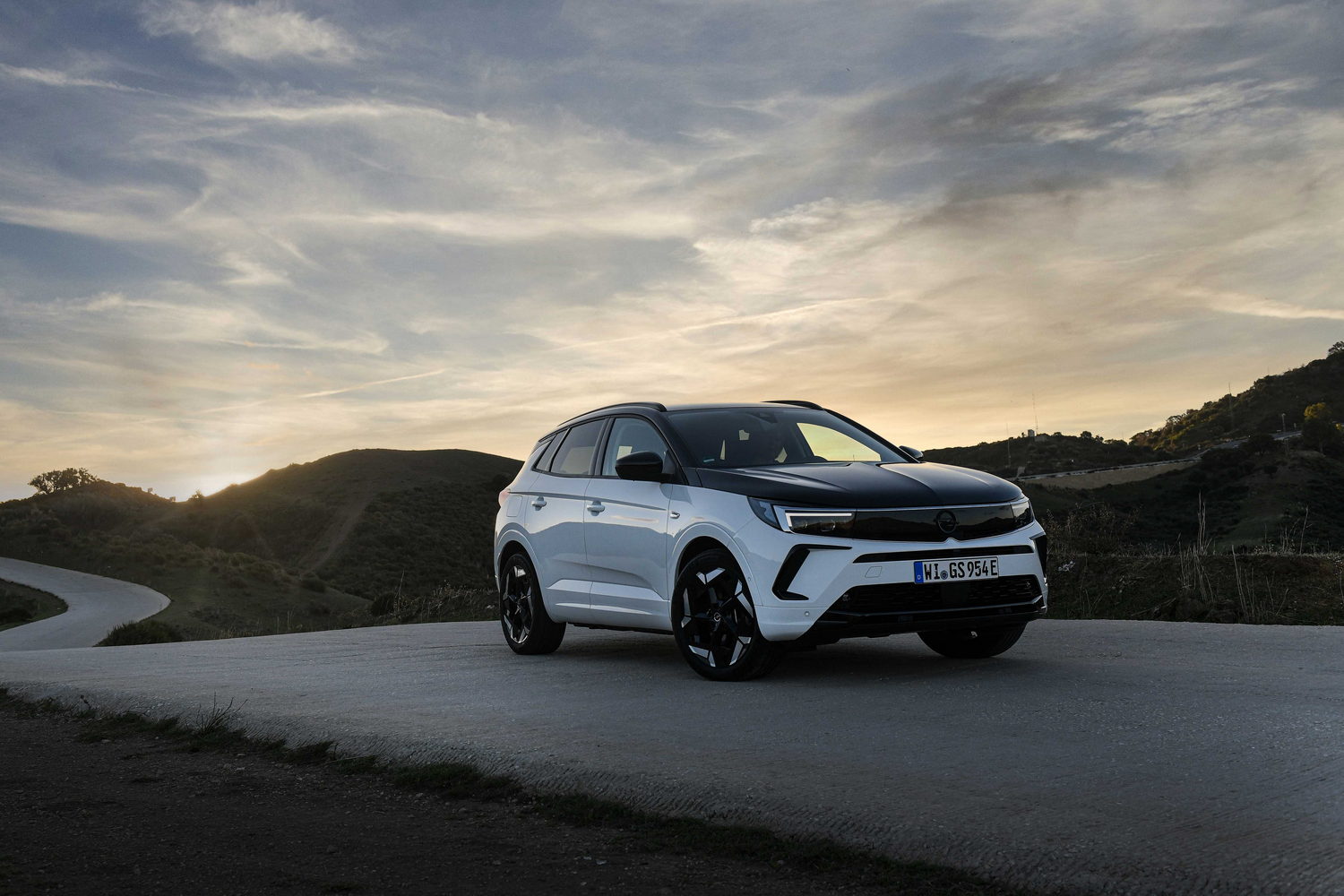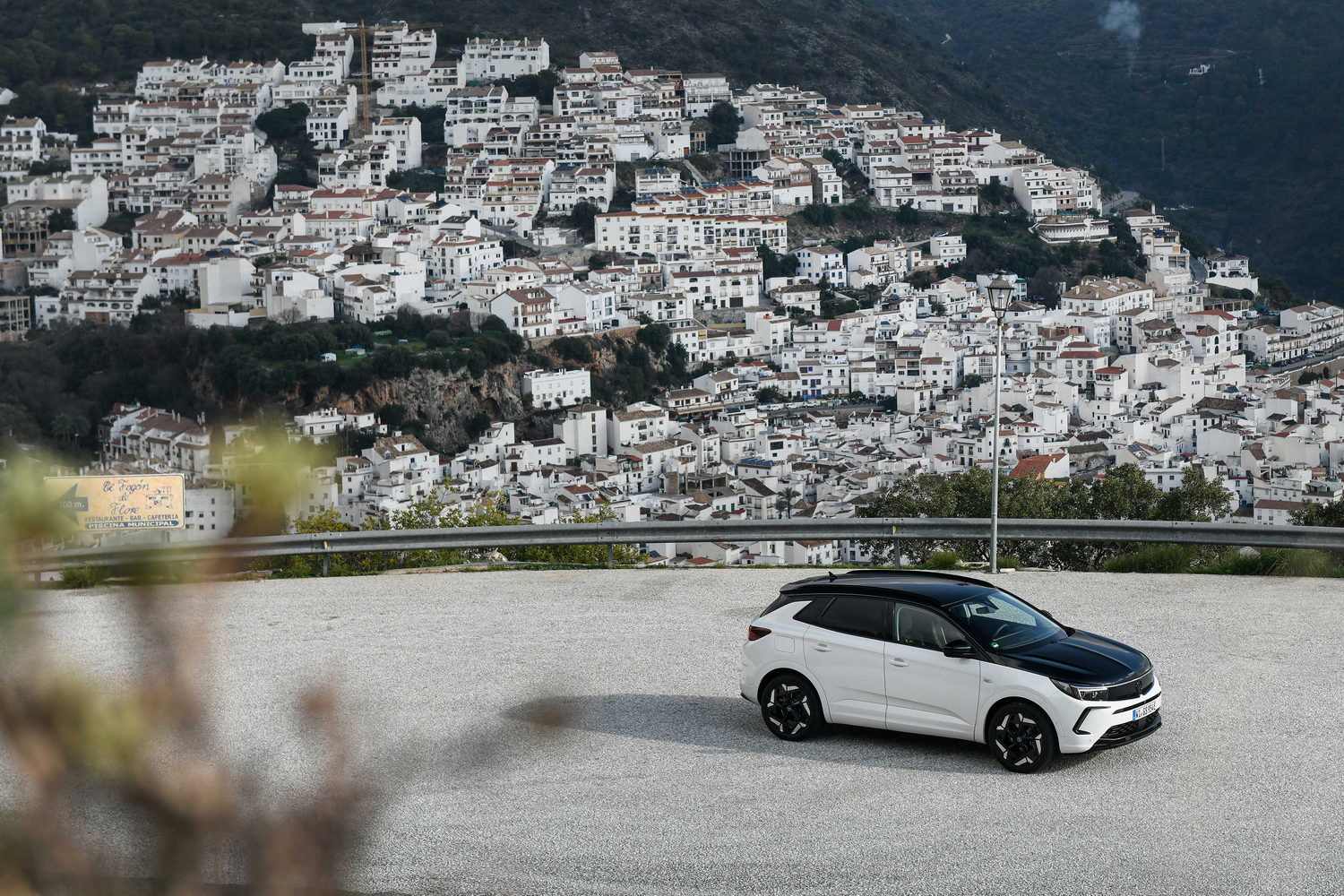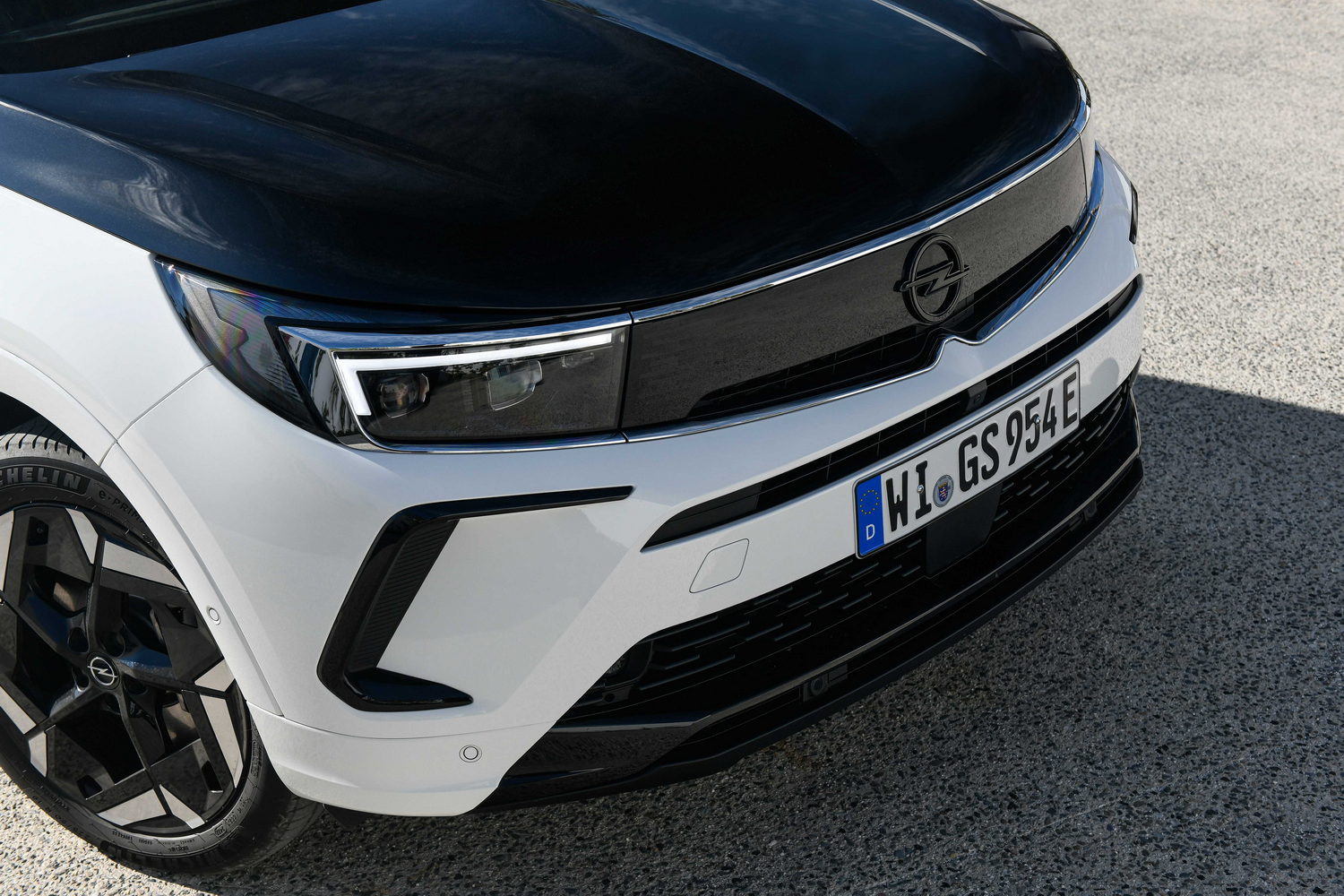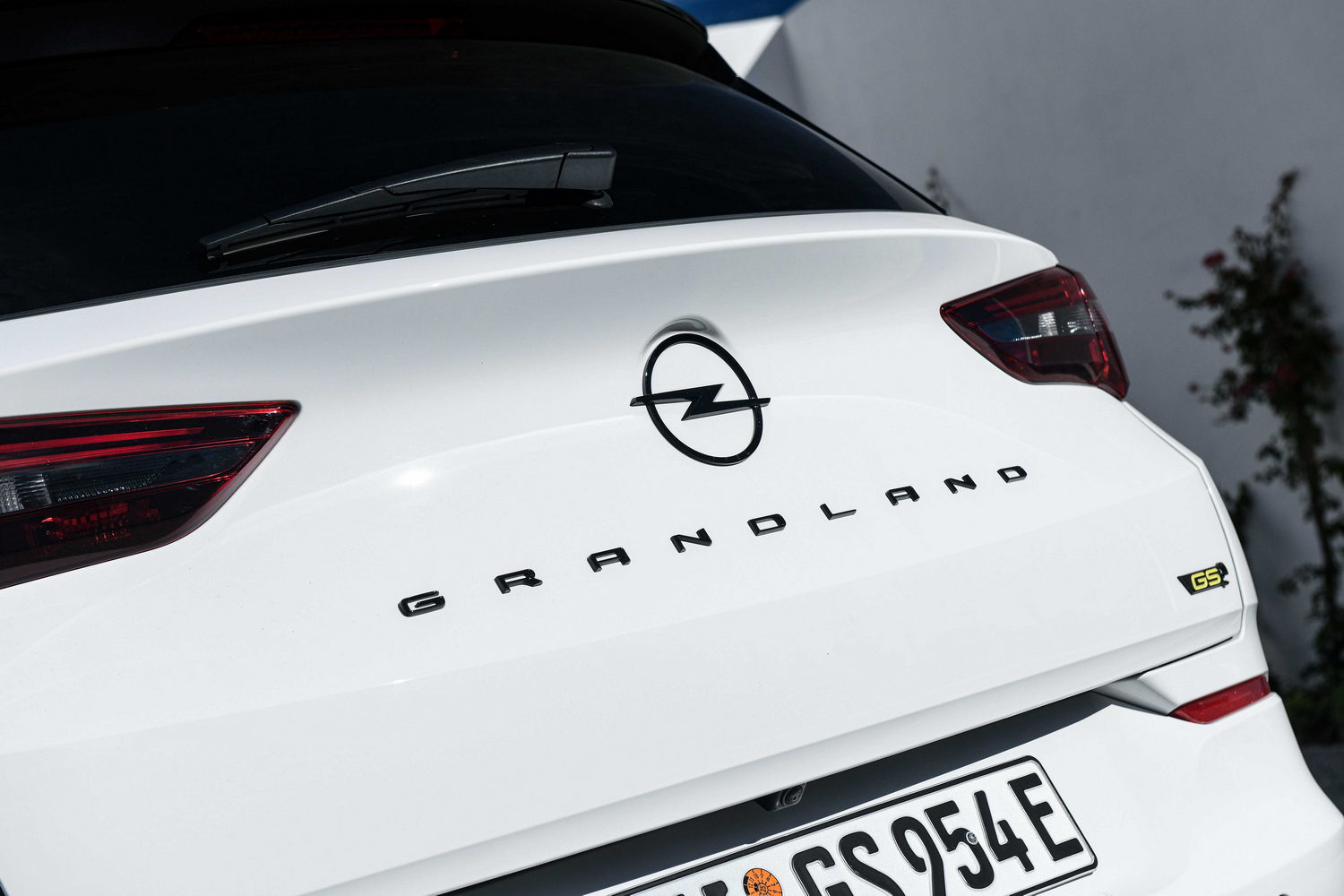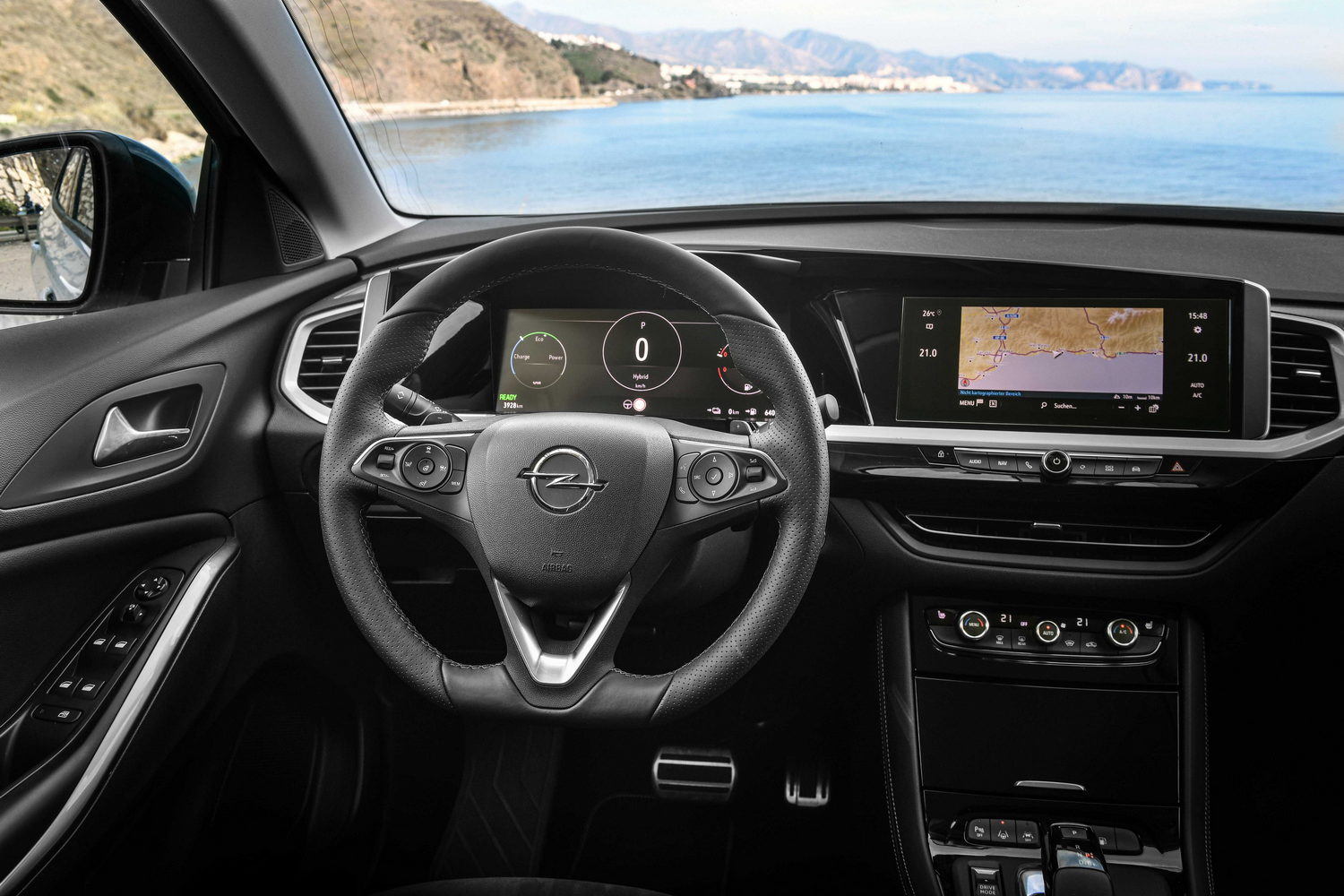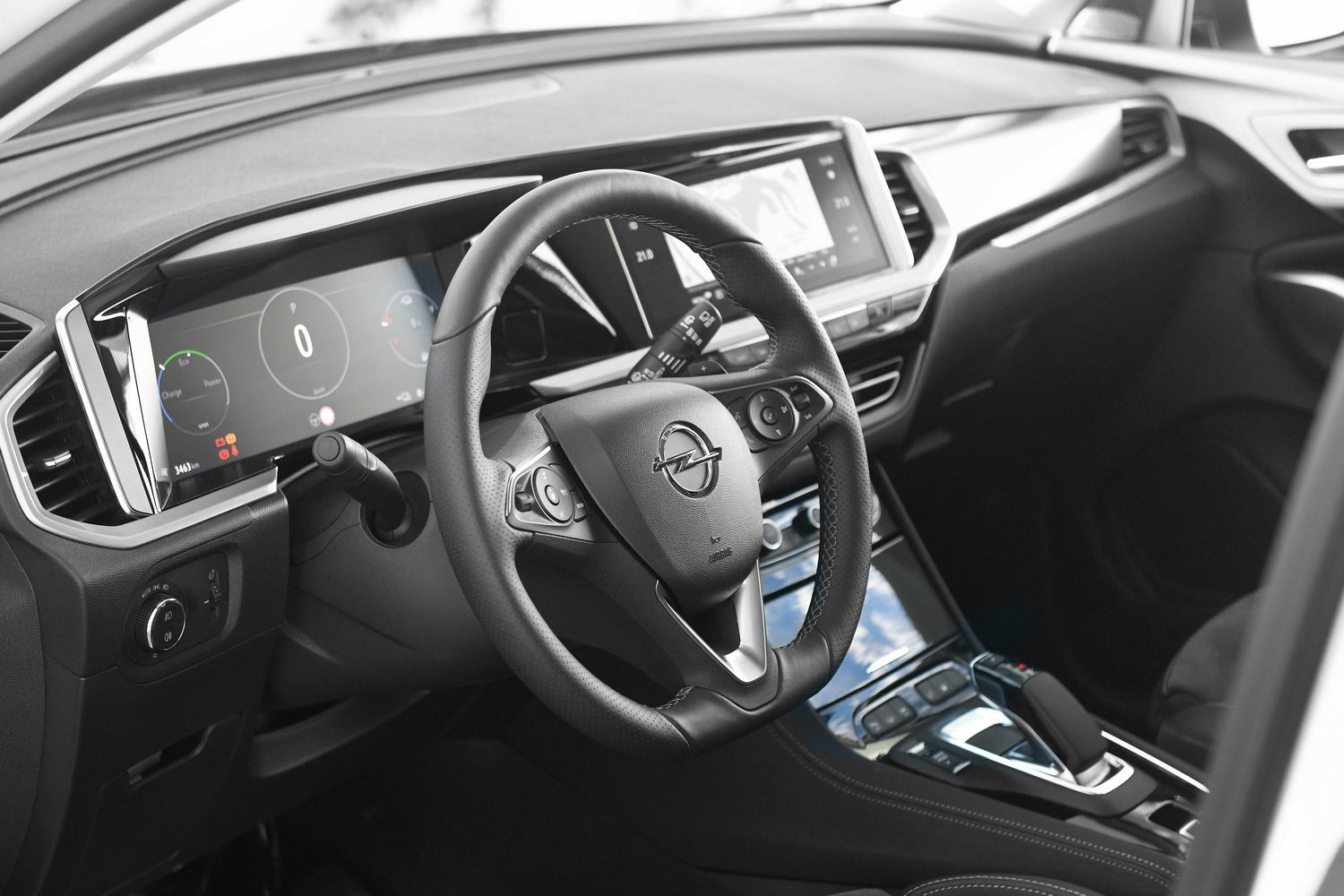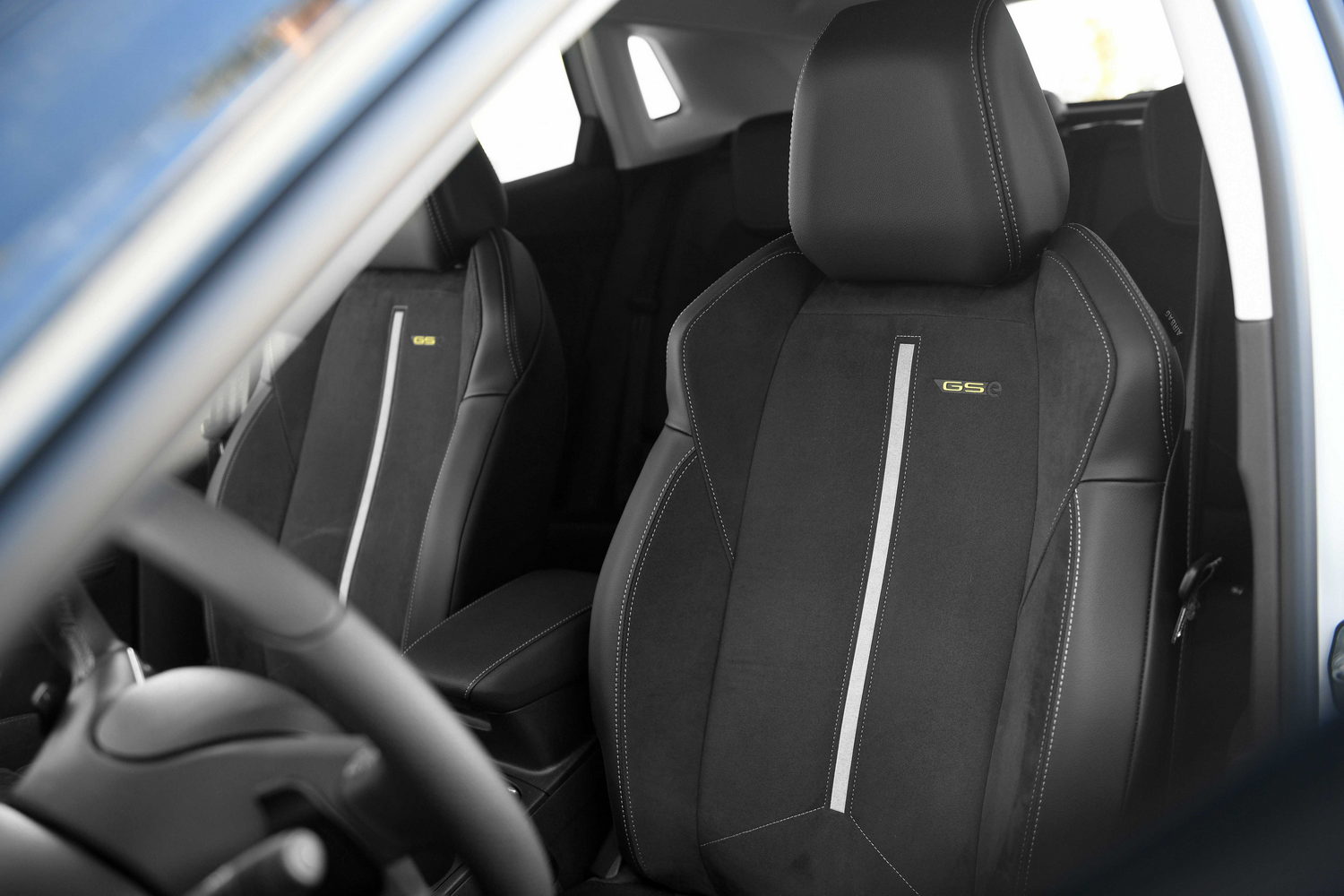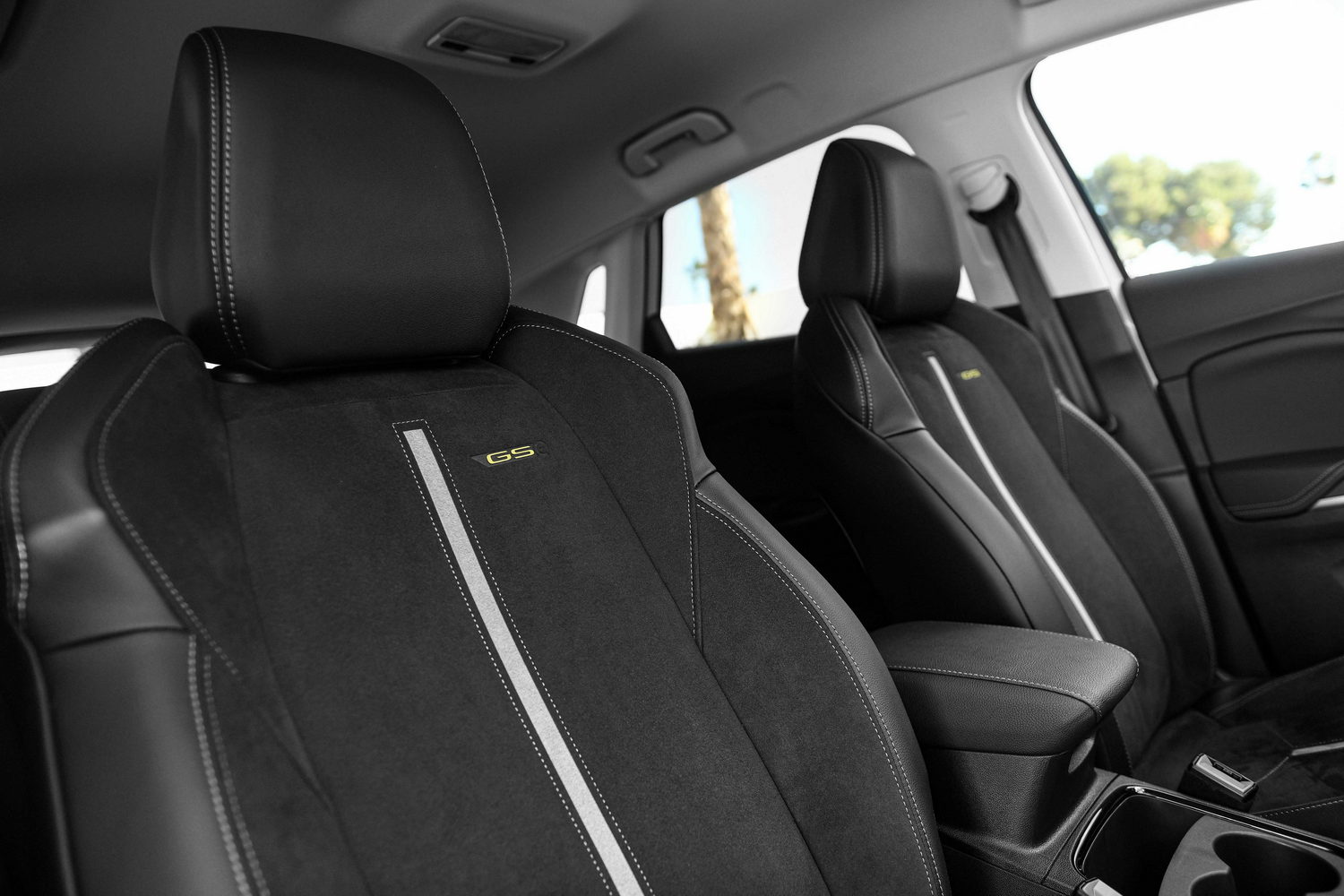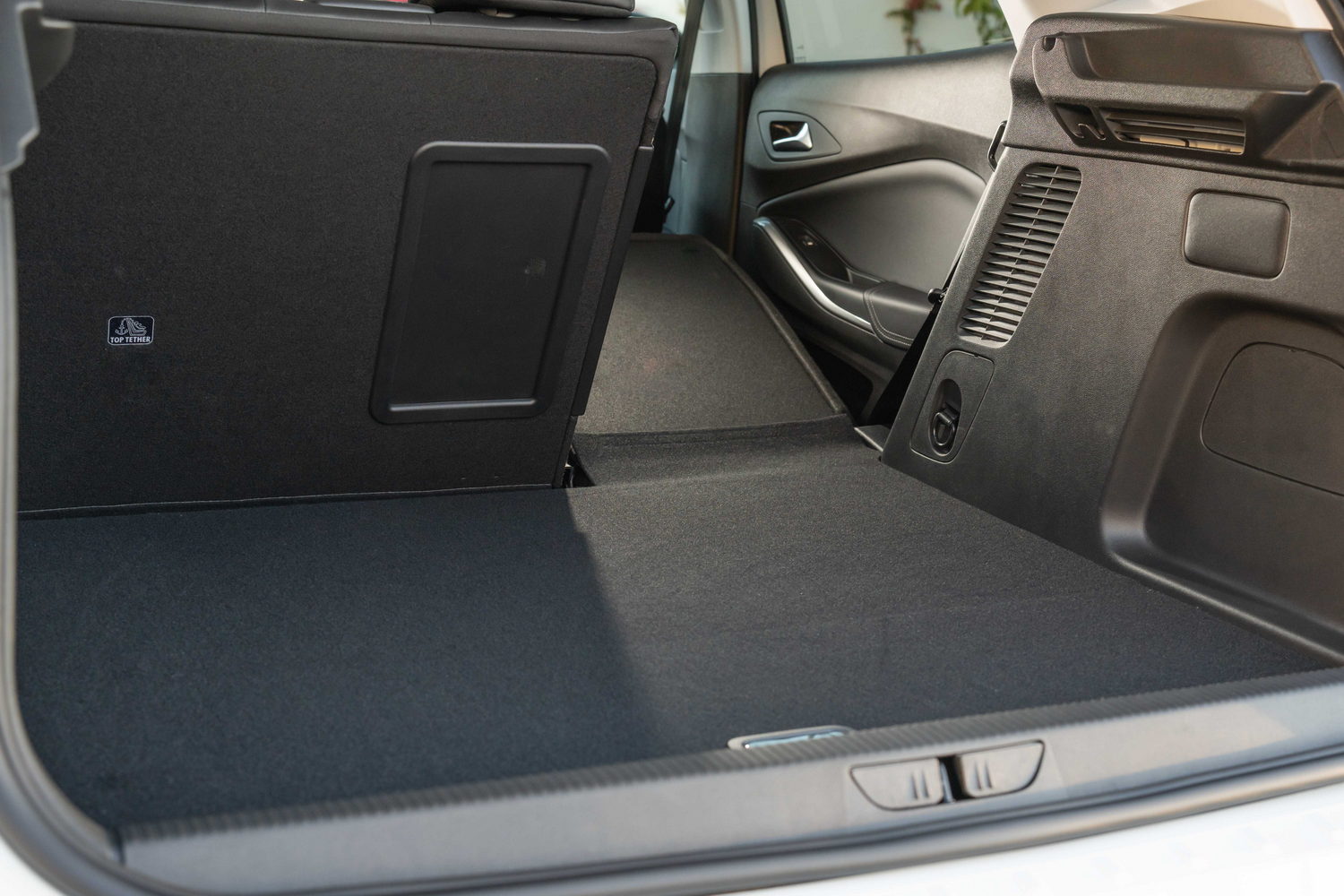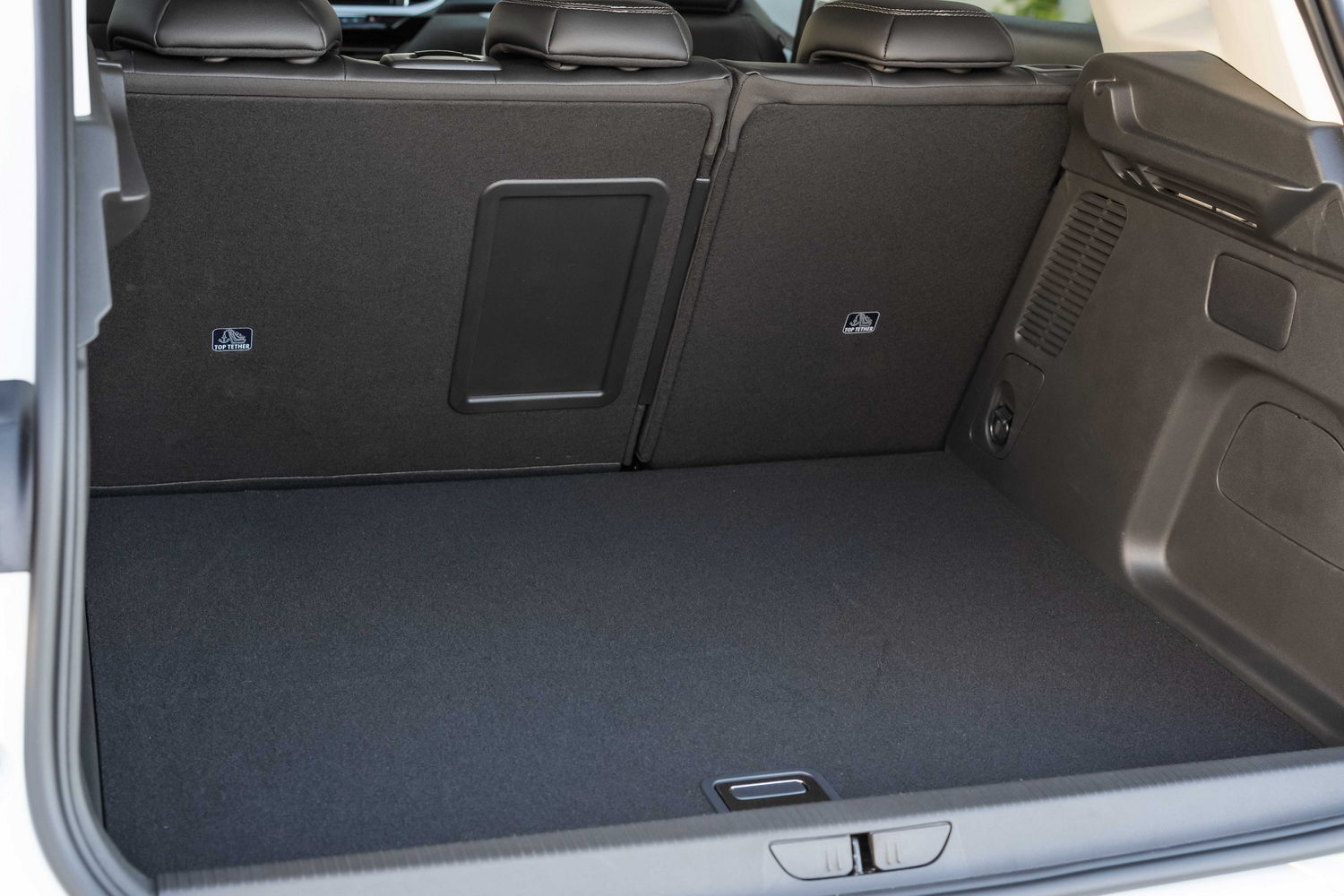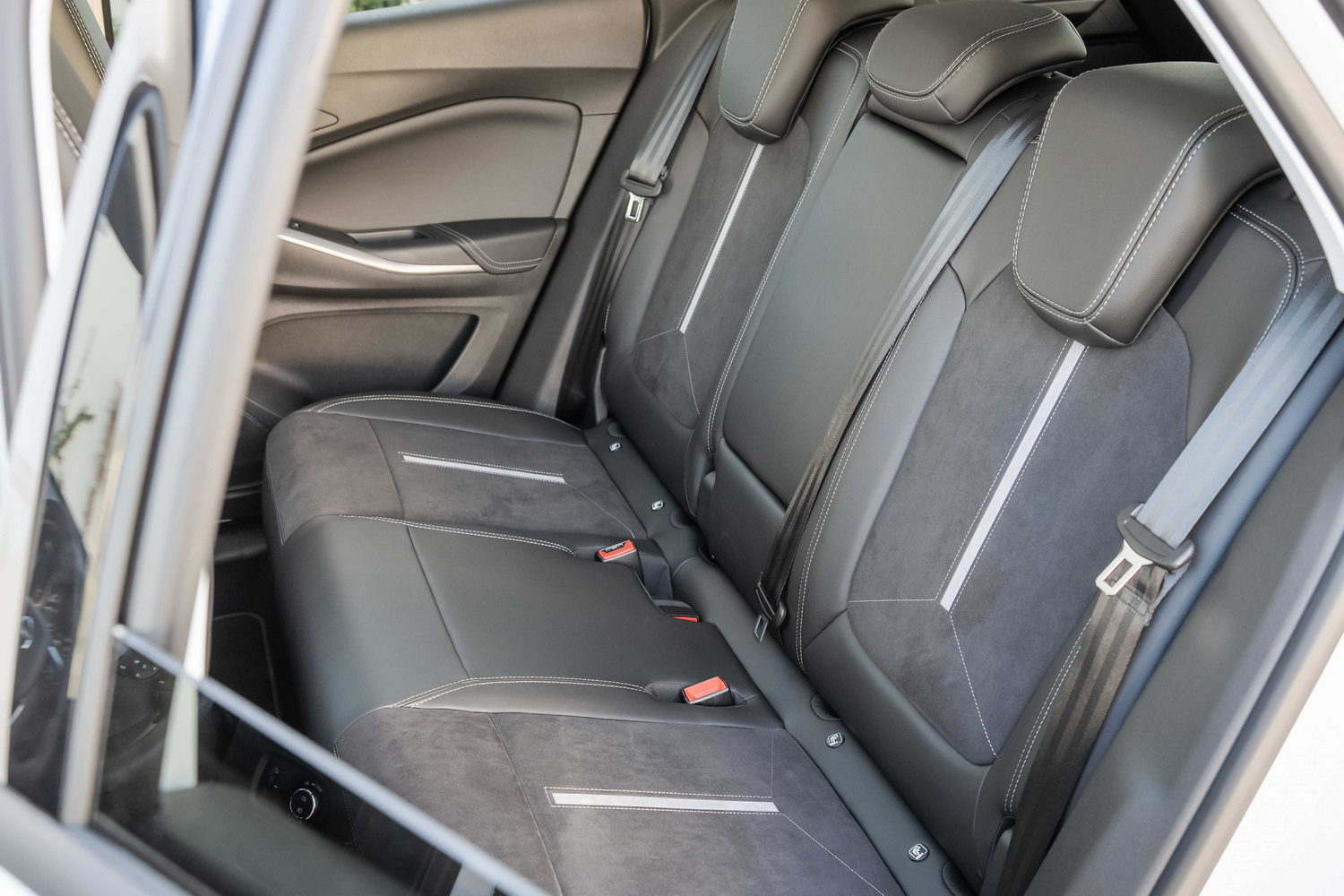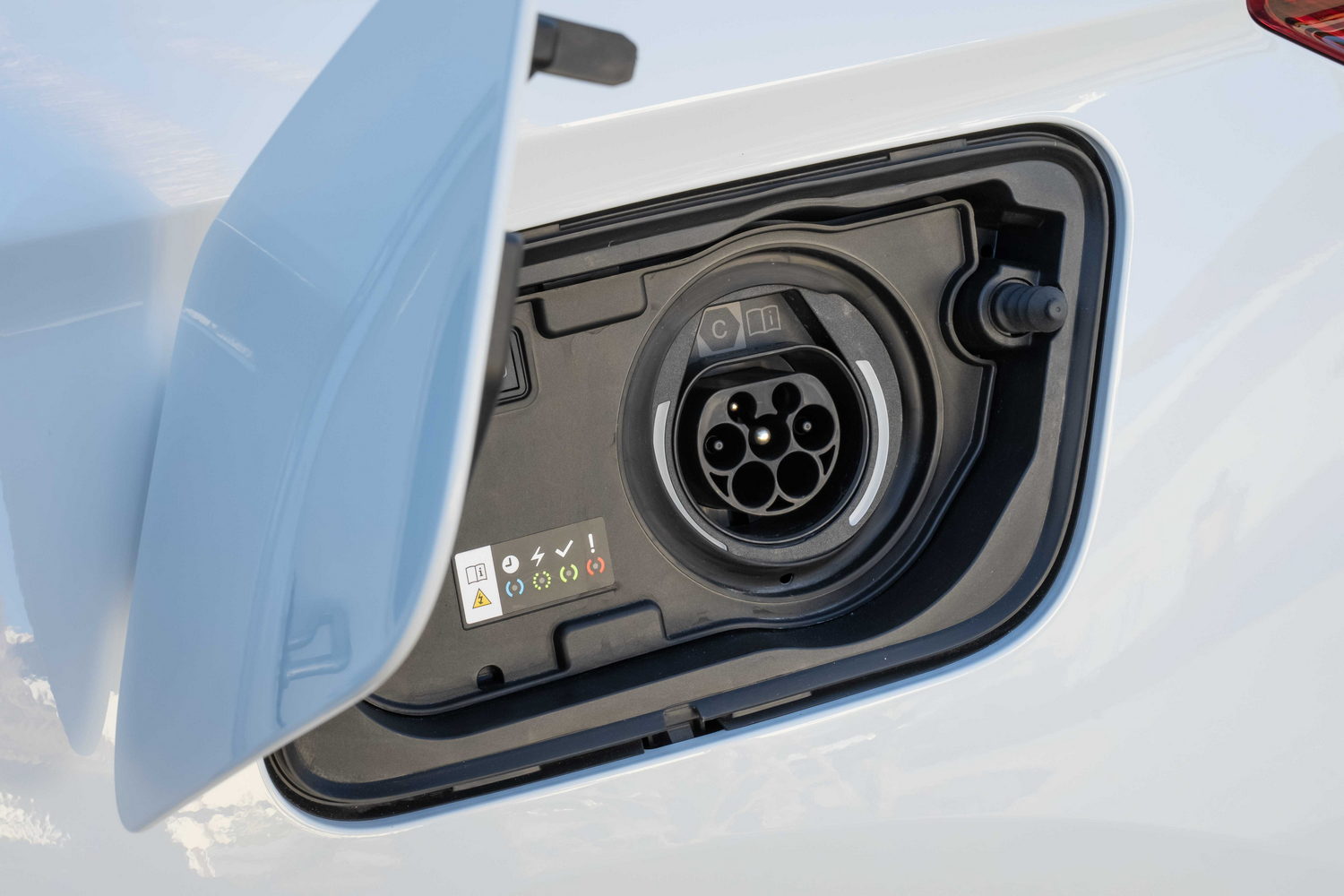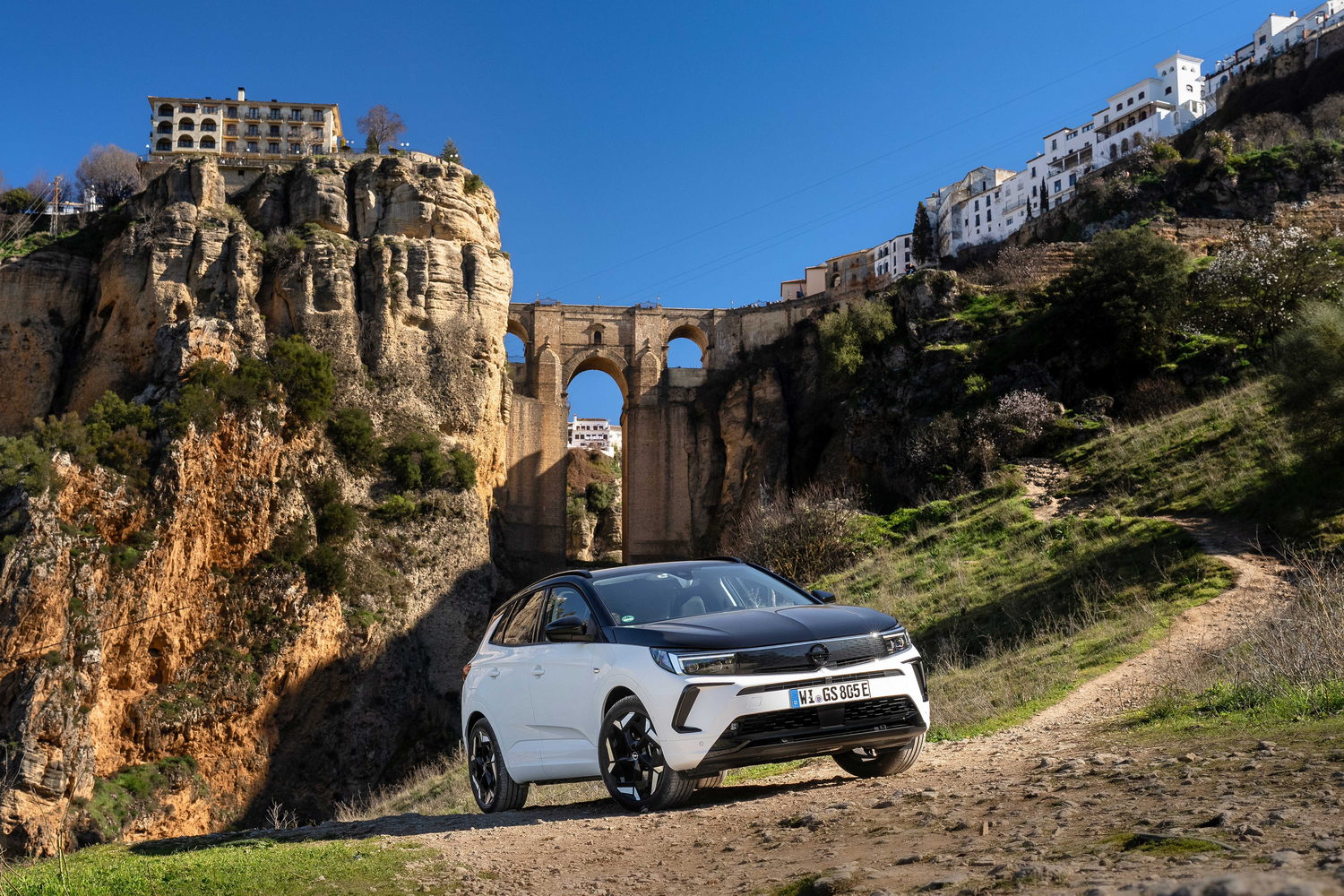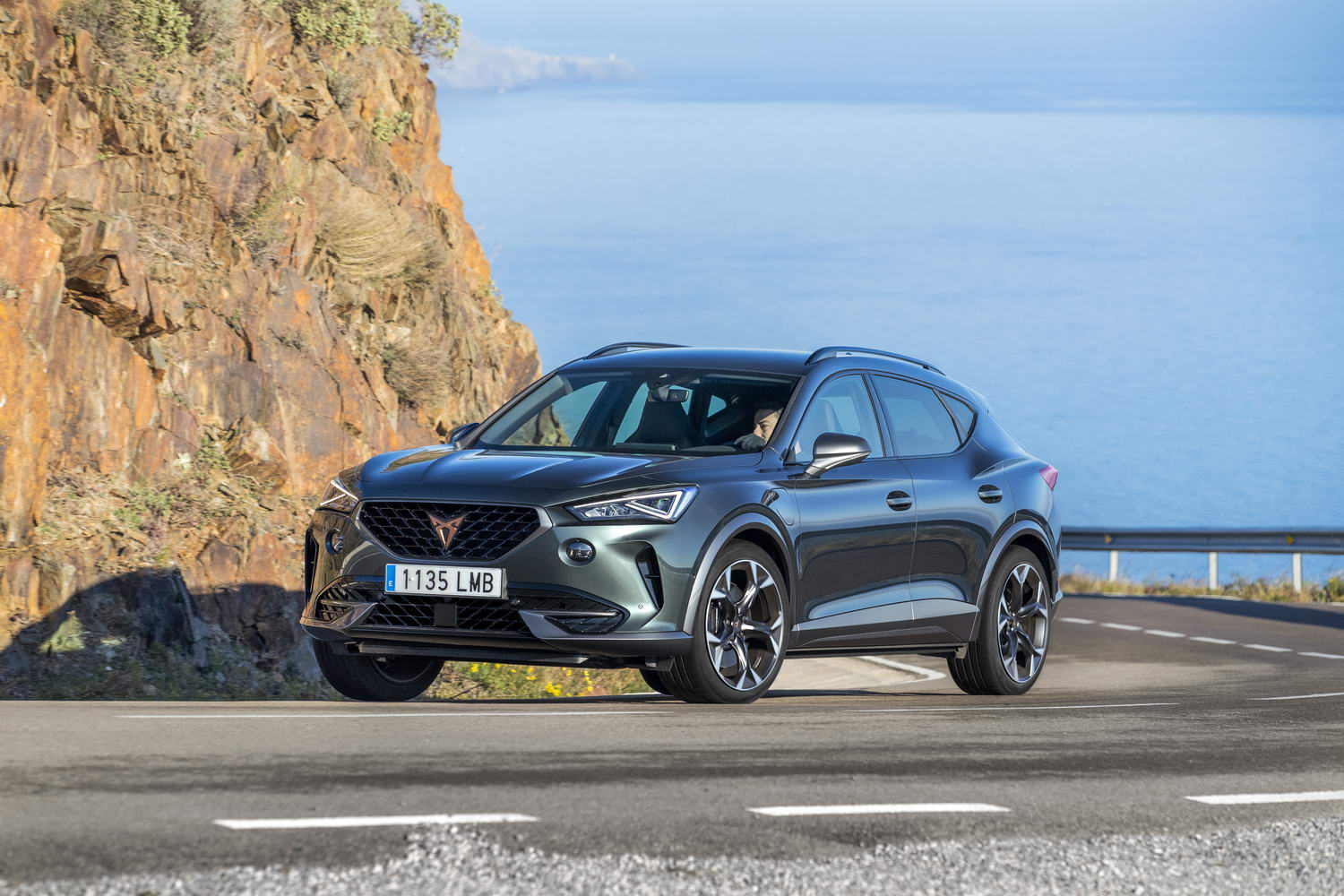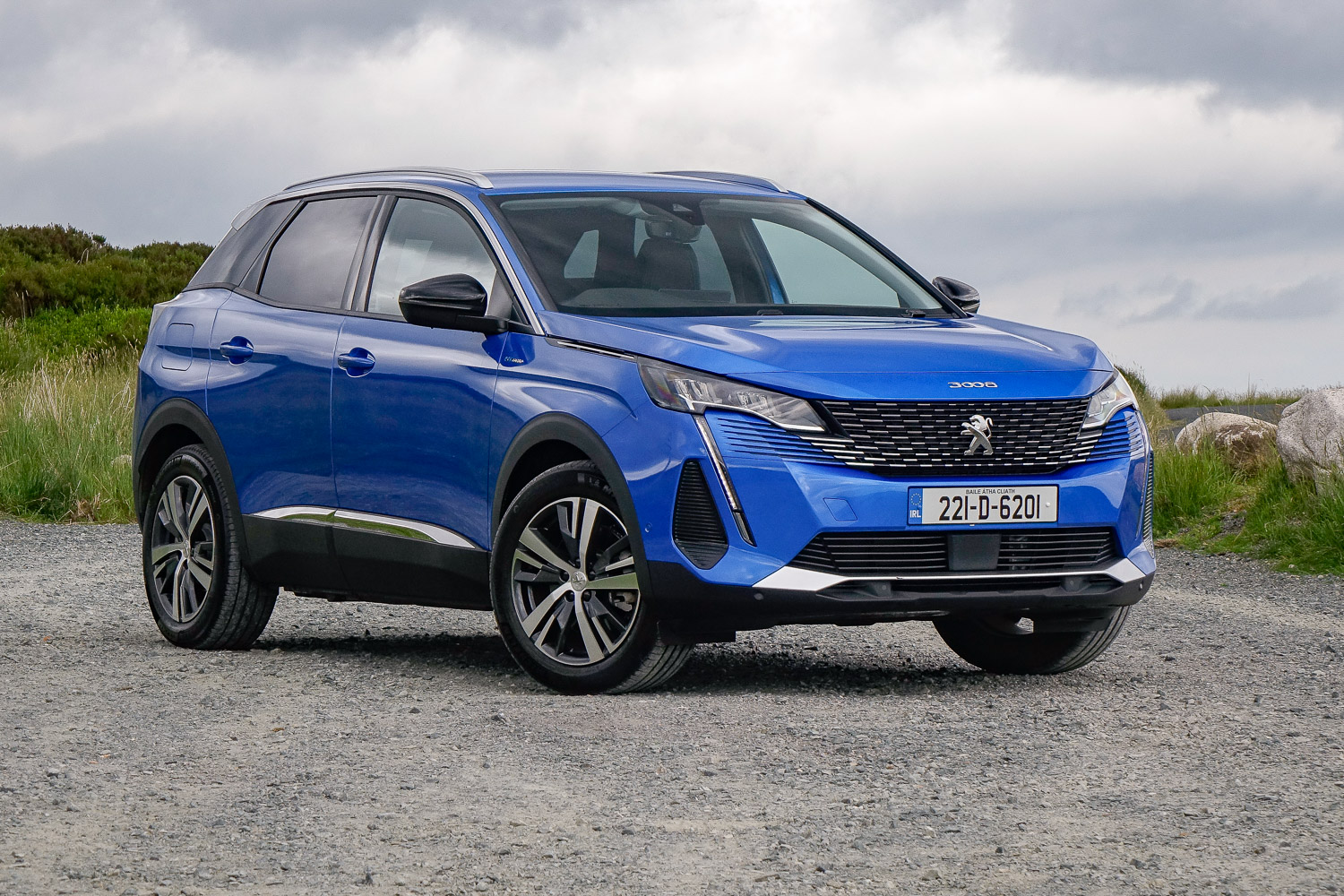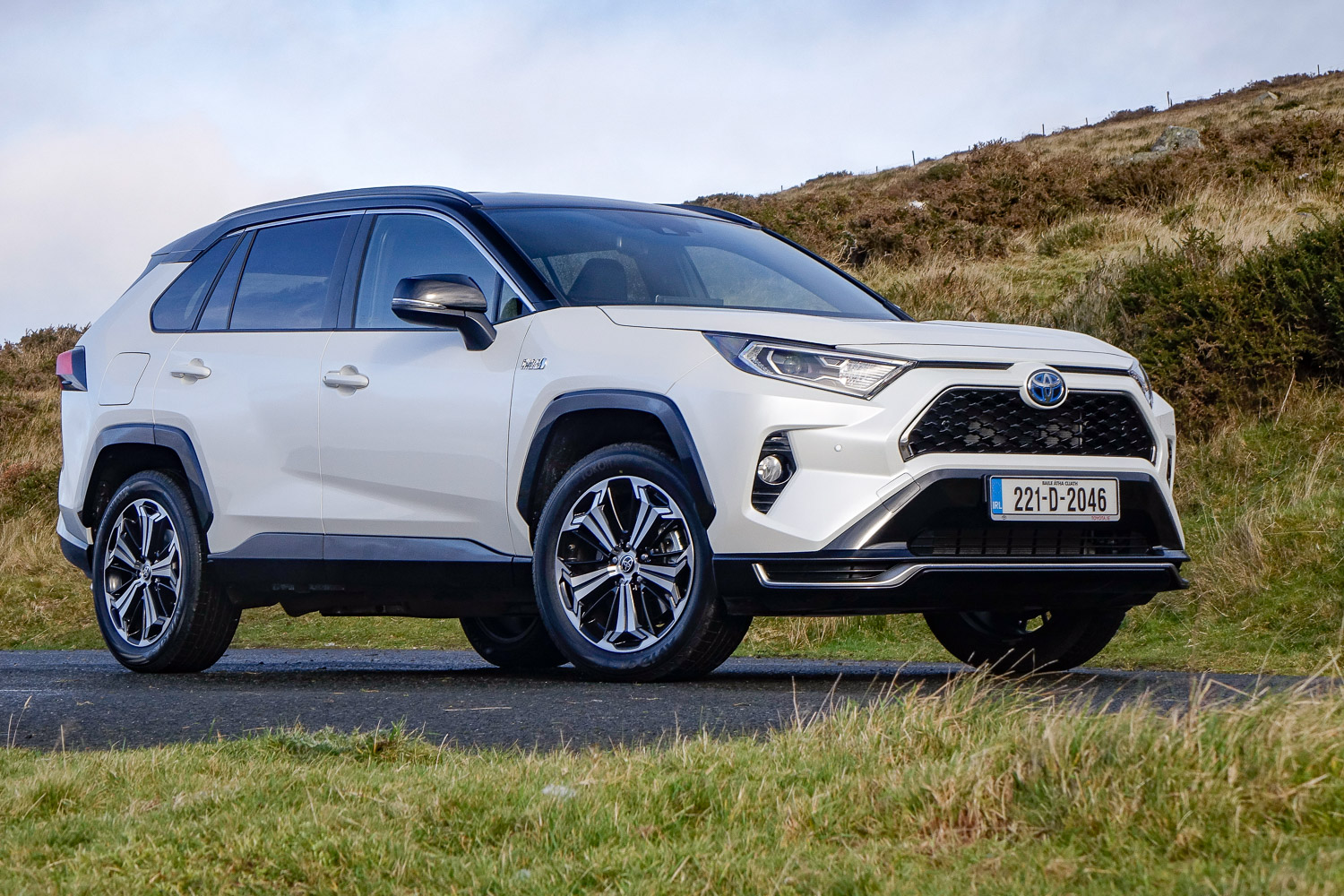The Opel Grandland was never touted as a car for keen drivers, but that's changing with the introduction of the new GSe model as part of the new electrified brand's rollout. Can a new 300hp plug-in hybrid version with an all-wheel-drive arrangement and tuned chassis deliver real thrills?
In the metal
The Opel Grandland as we know it is no spring chicken. It became Opel's flagship SUV in 2017 under the Grandland X name and that X aspect of the name was dropped when the Grandland was thoroughly updated in 2021. The main aspect of that model update was a new front-end design that was more consistent with the current look of Opels.
The maturity of the existing model means the GSe doesn't come in for any significant styling changes for its new, sportier specification. Opel does add 19-inch 'Monza' alloy wheels that look quite good and then there's the polarising black bonnet, something of a nod to Opel's past performance models - though we suspect that may be missed by many and the GSe will be mistaken for a car that's had a budget accident repair or a wrap applied. The contrasting roof helps, but it all looks a bit too conspicuous for what is still a family SUV underneath.
Wheels and bonnet aside, the only other GSe treatment the Grandland receives is a small badge on the tailgate. That boot has a luggage capacity of 390 litres, which isn't as large as the regular combustion-engined Grandland's due to the plug-in hybrid battery and electric motor on the rear axle. What you won't be able to spot from the outside is the upgrades to the chassis of the Grandland GSe, which include a recalibration of the steering and new suspension using Koni components - more on that later.
Inside, the look and feel are no different to that found in other high-spec Grandland models, which is a bit of a disappointment given how much Opel is doing to try to distinguish the GSe as a sub-brand of sorts. Performance seats are upholstered in a nice Alcantara material, admittedly, but elsewhere it's a sea of black plastics. The 'Pure Panel' dual-screen setup introduced with the updated Grandland in 2021 helps, but as with the exterior, it's little more than a bit of rhinoplasty on an otherwise dated-looking car. The Grandland's Stellantis genes mean same automatic gear selector as other brands, though even that is considered old hat by the group's standards, as plenty of other models have moved to a smaller rocker toggle-style shifter.
Driving it
Quite how much demand there was from Opel customers seeking a Grandland with sharper and more defined handling characteristics may be a moot point, but you can't launch a sub-brand with only one model (the Astra). As the Grandland is a larger (and heavier) car, it gets a higher power output than the Astra GSe to deliver appropriate performance - thanks primarily to an electric motor on the rear axle. The 14.2kWh battery provides up to 63 kilometres of electric driving, which should be plenty for average drivers so long as the car is kept on charge when parked. Charging that battery takes only two hours on a 7.4kW charge point, so there's no reason not to plug it in at every opportunity.
The electric aspect of driving the Opel results in an expectedly pleasant experience. Not a great deal of noise seeps into the cabin, and the pick-up from the electric motors is brisk, so even though the car tips the scales at 1,867kg, it rarely feels sluggish. The smoothness of the power delivery is more appealing than its outright pace, and you will want to keep it in that electric mode as much as possible. When the battery depletes, the 1.6-litre petrol engine kicks in and switches to a hybrid mode, so it won't always be running, and to the fair to the Opel, it is swift about switching off the engine when the opportunity presents itself.
One of the positives about the suspension work done to the Grandland GSe is that it hasn't been transformed into an overly firm SUV that feels like it will rattle your fillings loose. Instead, the suspension has a nice progressive feel as it soaks up bumps beneath. Should you then find a more free-flowing and interesting ribbon of tarmac, the ride subtly shifts to one that feels tauter. Body control is good; even quick direction changes don't make it feel as sloppy as some other SUVs are.
The dual-electric motors add a decent amount of extra shove when accelerating out of corners. However, the inclusion of the turbocharged four-cylinder engine doesn't make for a better soundtrack. It's by no means a hot hatch (neither is the Astra GSe), but with 300hp combined from the hybrid system it is swift enough, cruising comfortably at motorway speeds, seemingly with plenty still in reserve. The Opel is a nice steer over a winding road and once you're not trying to wring every single bit of power from it, it's best described as a pleasant car to drive. Having all-wheel drive does bring an added sense of security on the road. Even away from the sportier side of driving, it will provide additional traction in winter months and more extreme weather.
There is the suggestion that such a powertrain brings some guilt-free driving with its reduction in emissions. However, that battery range will run down quite quickly with a heavier foot and in its Sport setting, the official fuel consumption figure of 1.2 litres/100 kilometres isn't going to be achievable. View the Grandland GSe as a range-topper rather than pure sporty model and you'll probably appreciate it more.
What you get for your money
As the Grandland GSe sits at the top of the pile, it carries a high price, beginning at €59,995. The equipment levels are good, and you get everything you'd expect, including niceties such as heated front seats and a heated steering wheel. Front and rear parking sensors plus a 360-degree camera system are joined by a Night Vision system that can detect animals and people in complete darkness - great if you live in unlit rural areas. Opel's pixel matrix LED headlights also help illuminate the road ahead without dazzling other drivers and there are numerous other driver assistance systems, including adaptive cruise control and enhanced traffic sign recognition. There is a built-in navigation system, too, though Android Auto and Apple CarPlay mean many will likely use other mapping apps.
Summary
The Opel Grandland GSe is expensive, which may deter some, but it's worth looking at how much equipment comes as standard. Still, €60,000 also gets you into other, more premium models. While it's unlikely that hordes of buyers were appealing to Opel to produce a higher-performance model in the first place, and the GSe treatment doesn't wholly transform the Grandland, it all works well enough.

